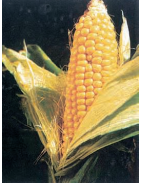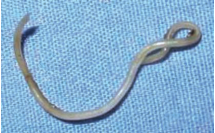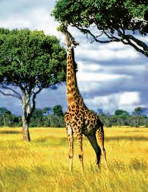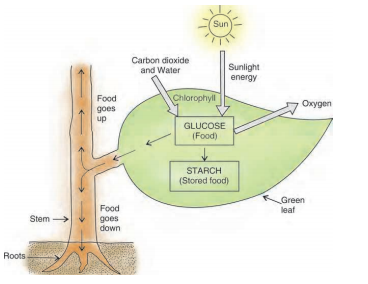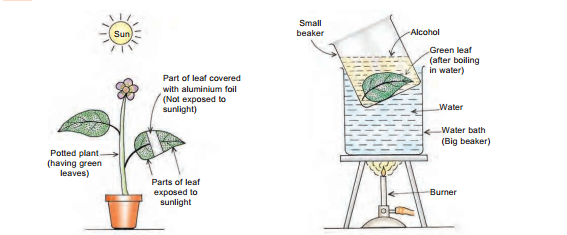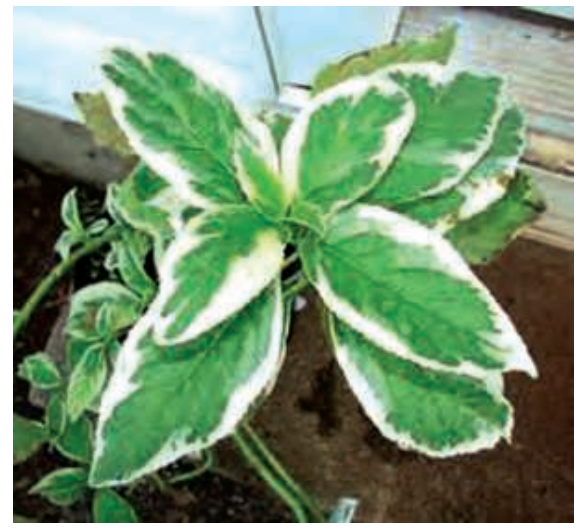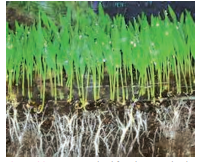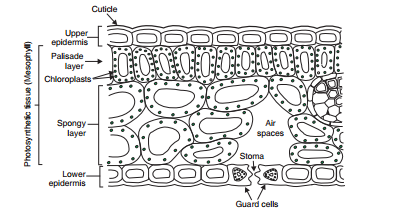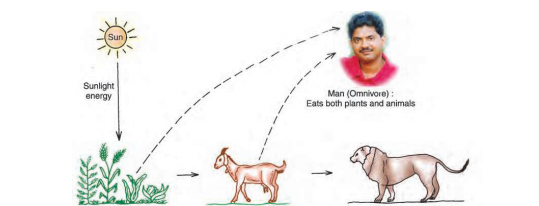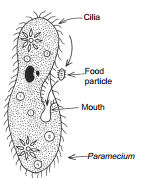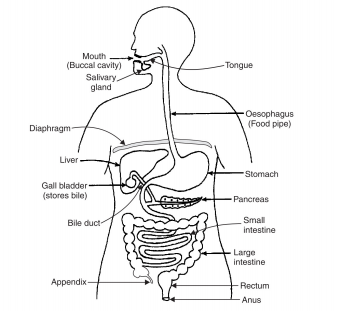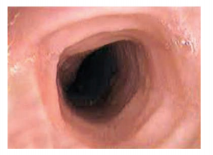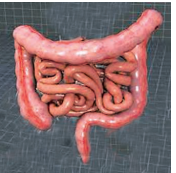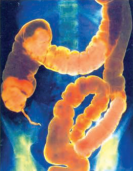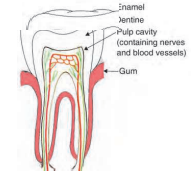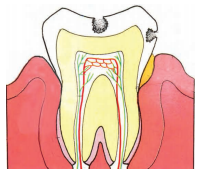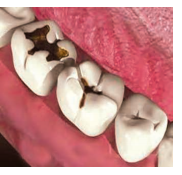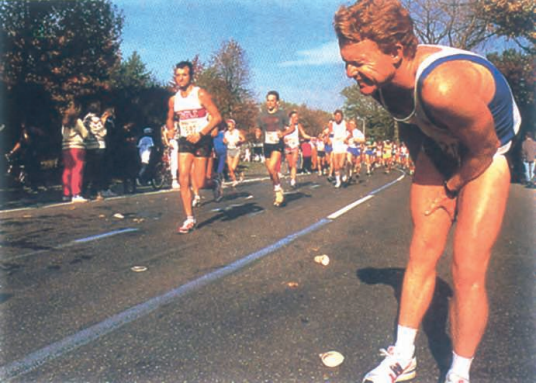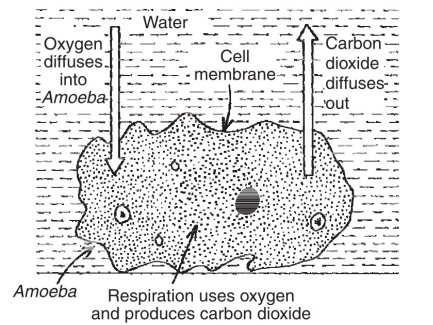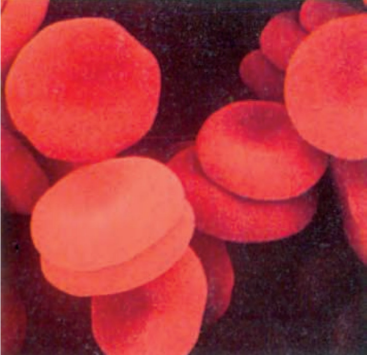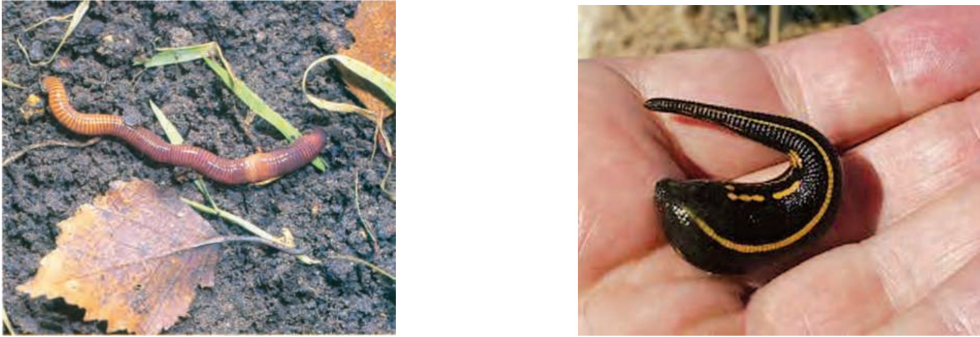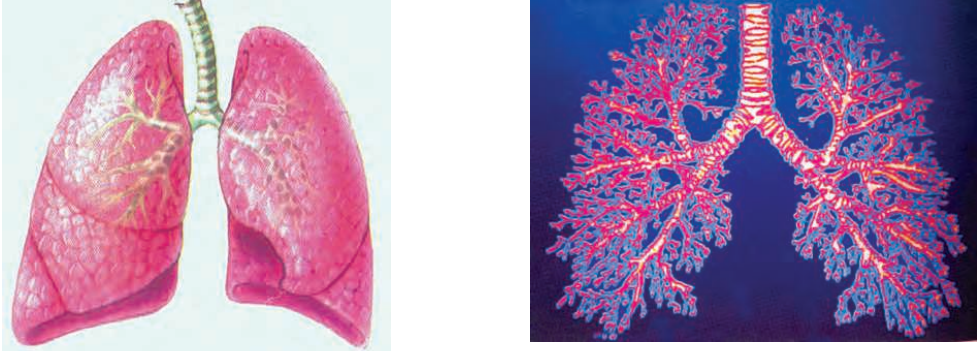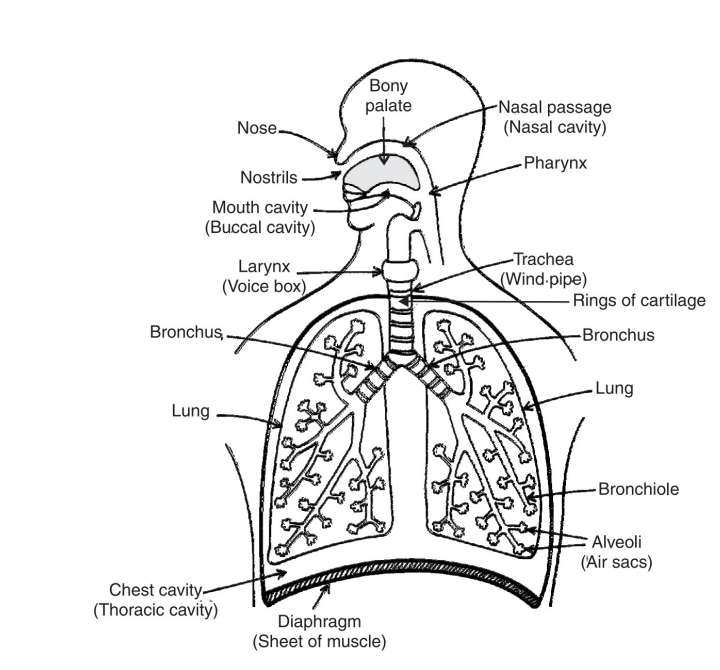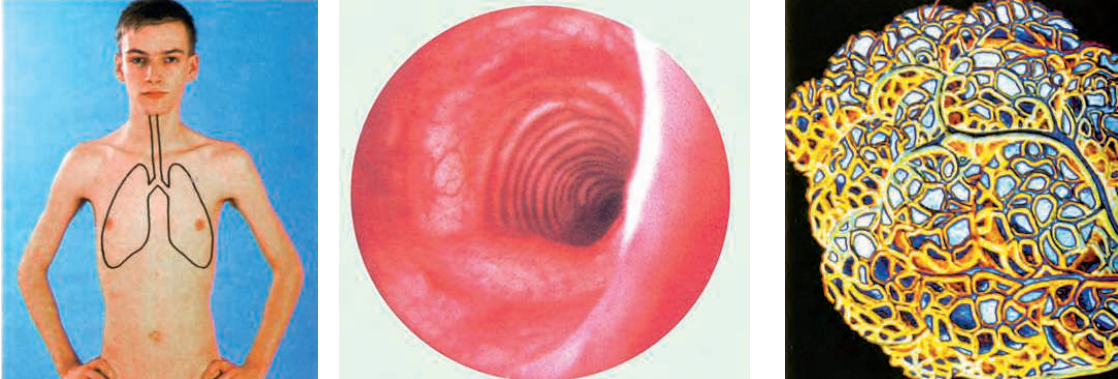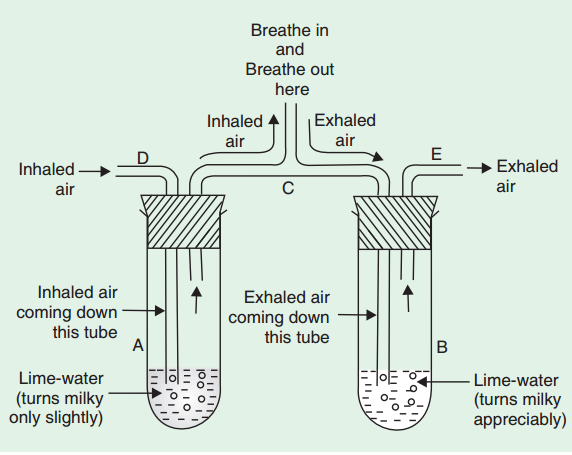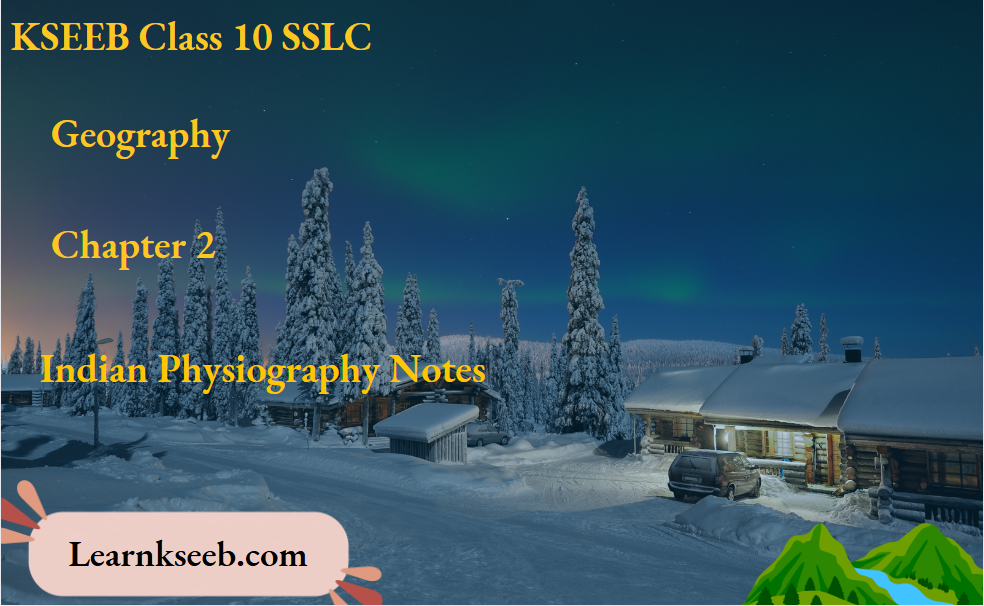KSEEB Class 10 SSLC Biology Chapter 3 How Do Organisms Reproduce Notes
In the previous Chapters, we have studied those life processes which help an organism (plant or animal) to keep ‘alive’. Now, all the living organisms grow old with time and ultimately die. In fact, every living organism remains alive on this earth for a limited period of time and then dies. So, new organisms have to be produced in place of those who die.
The production of new organisms from the existing organisms of the same species is known as reproduction. In most simple words we can say that reproduction
is the creation of new living things (from the existing living things).
Actually, one of the most important characteristics of living organisms is their ability to reproduce more members of their species. Reproduction is essential for the survival of a species on this earth. So, living organisms produce more organisms of their kind to maintain the life of their species on this earth.
The process of reproduction ensures continuity of life on earth. For example, human beings reproduce by giving birth to babies (sons and daughters). These babies grow and ultimately become adults. So, when the old parents die, their sons and daughters keep living on this earth.

These sons and daughters also reproduce by giving birth to more babies, and this process goes on and on. Thus, reproduction by human beings ensures that the human species will continue to exist on this earth for all the time to come. Similarly, cats reproduce by giving birth to kittens so that their species may live for ever. And dogs reproduce by giving birth to puppies so that their species may continue to live on this earth. Most of the plants reproduce by producing seeds to grow more plants so that their species may continue to live on this earth.
It is clear from the above discussion that for a species of a plant or an animal to continue living on this earth, it must reproduce itself. Reproduction gives rise to more organisms with the same basic characteristics as their parents. For example, human beings always produce human babies; cats always produce kittens; and sunflower seeds always produce sunflower plants. If, however, some species of the living organisms cannot reproduce due to certain reasons, then the organisms of this species will gradually die out and disappear from this earth one day. In this chapter we will discuss the various methods of reproduction in plants and animals.
Please note that the existing organism or organisms are called parents and the new organisms produced by them are called offsprings. For example, our father and mother are parents and we (their children) are the offsprings. The parent or parents of organisms can be animals as well as plants. Sometimes, the word daughter (or daughter cells) is also used for the offsprings of an organism.
KSEEB Class 10 SSLC Biology Chapter 3 How Do Organisms Reproduce Types Of Reproduction
There are many different ways in which new organisms are produced from their parents. Some organisms like Amoeba just split into two parts to produce new Amoebae; some organisms like Hydra and yeast grow out of the parent’s body in the form of a bud; some organisms like birds and snakes hatch out of the eggs laid by their parents; whereas some organisms like human babies, cubs, kittens and puppies are born from their mother.
This means that each species of organisms reproduces in a different way. All the different ways of reproduction can be divided into two main groups: asexual reproduction and sexual reproduction. Thus, there are two main methods of reproduction in living organisms:

- asexual reproduction, and
- sexual reproduction.
We can now say that the living organisms reproduce mainly by two methods: ‘asexual reproduction’ and ‘sexual reproduction’. This means that new living organisms (new plants and animals) can be made either by the method of ‘asexual reproduction’ or by the method of ‘sexual reproduction’. We will now discuss the meaning of asexual reproduction and sexual reproduction.
In order to understand this, please keep in mind that certain organisms contain ‘reproductive cells’ (called ‘sex cells’, ‘gametes’ or ‘germ cells’) in their bodies whereas some other organisms do not contain ‘reproductive cells’ (‘sex cells’, ‘gametes” or ‘germ cells’) in their bodies.
Asexual Reproduction
In asexual reproduction, the offspring arises from a single parent. The production of a new organism from a single parent without the involvement of sex cells (or gametes) is called asexual reproduction. It is called asexual reproduction because it does not use special cells called ‘sex cells’ (or gametes) for producing a new organism.
In asexual reproduction, a part of the parent organism separates off and grows into a new organism. Thus, in asexual reproduction, only one parent is needed to produce a new organism. But no sex cells are involved in asexual reproduction. Some of the examples of asexual reproduction are: binary fission in Amoeba; budding in Hydra; spore formation in Rhizopus fungus (or bread mould); regeneration in Planaria (flatworm); fragmentation in Spirogyra and vegetative propagation in flowering plants (like rose plants).
Please note that asexual reproduction is the simplest method of reproduction. It takes place mainly in those organisms whose bodies have a simple structure. So, the simple animals, simple plants and micro-organisms (like bacteria) reproduce by asexual reproduction methods. Actually, asexual reproduction takes place in unicellular animals and plants, micro-organisms (like bacteria) and simple multicellular animals (like Hydra and Planaria) and some multicellular plants (like Bryophyllum and rose plants, etc.).
Sexual Reproduction
- In sexual reproduction, the offspring arises from two parents of different sexes: a male sex and a female sex. The male parent contains male sex cells (or male gametes) and the female parent contains female sex cells.The production of a new organism from two parents by making use of their sex cells (or gametes) is called sexual reproduction.
- In sexual reproduction, the sex cell of one parent fuses with the sex cell of the other parent to form a new cell called ‘zygote’. This zygote then grows and develops to form a new organism. Thus, in sexual reproduction, two parents are needed to produce a new organism. The two parents which are involved in sexual reproduction are called male and female.
- Our father is a male and our mother is a female. The male and female parents have special organs in them which produce male sex cells and female sex cells respectively (which are required in sexual reproduction). The humans, fish, frogs, hens, cats, dogs, cows, horses, deer, rabbits, lions and tigers all reproduce by the method of sexual reproduction.
- Most of the flowering plants also reproduce by sexual reproduction. As we will study after a while, some organisms use both the methods (asexual and sexual) for reproduction whereas other organisms use only one of these methods for reproduction.
- The basic difference between asexual and sexual reproduction is that only one parent is needed in asexual reproduction whereas two parents are needed in sexual reproduction.
- Another difference is that no sex cells (or gametes) are involved in asexual reproduction but sex cells (or gametes) take part in sexual reproduction. We will now study the asexual reproduction and sexual reproduction in detail, one by one. Let us start with asexual reproduction.
Asexual Reproduction
In the asexual reproduction method, certain body cells of the parent organism undergo repeated mitotic cell divisions to form two (or more) new organisms of the same kind. Asexual reproduction takes place by six different methods. These are
- Fission
- Budding
- Spore formation
- Regeneration
- Vegetative propagation
- Fragmentation
We will now describe all these methods of asexual reproduction in detail, one by one. Let us start with fission.
1. FIssion
Many single-celled organisms like protozoa and bacteria just split (or break) into two identical halves during cell division, leading to the creation of new organisms. This is called fission. In biology, fission is the process of reproduction in unicellular organisms such as protozoa (like Amoeba, Paramecium, Leishmania, etc.) and many bacteria. In the process of fission, a unicellular organism splits (or divides) to form two (or more) new organisms. Fission is of two types : binary fission and multiple fission, depending on whether the parent organism splits to form two new organisms or more than two organisms. The two types of fission are discussed below:
Binary Fission
- Binary fission is an asexual method of reproduction of organisms. In binary fission, the parent organism splits (or divides) to form two new organisms. When this happens, the parent organism ceases to exist and two new organisms come into existence. The unicellular organisms like Amoeba, Paramecium, Leishmania, bacteria, etc., reproduce by binary fission.
- This is described below.Amoeba reproduces by binary fission by dividing its body into two parts. This happens as follows: When the Amoeba cell has reached its maximum size of growth, then first the nucleus of Amoeba lengthens and divides into two parts. After that the cytoplasm of Amoeba divides into two parts, one part around each nucleus.

- In this way, one parent Amoeba divides to form two smaller Amoebae (called daughter Amoebae). And we say that one Amoeba produces two Amoebae. The reproduction in Amoeba by binary fission . The two daughter Amoebae produced here grow to their full size by eating food and then divide again to produce four Amoebae, and so on.
- In the unicellular organisms such as Amoeba, the splitting of the parent cell during fission (or cell division) can take place in any plane.Paramecium is a unicellular animal having short thread-like structures called cilia over its surfac. Paramecium also reproduces by the method of binary fission.
- A fully grown Paramecium divides its body into two parts to form two smaller Paramecia. This happens by the division of nucleus followed by the division of cytoplasm. Leishmania is a unicellular animal (which is a protozoan) Figure 6. Paramecium Cilia Flagellum
- It is a parasite which causes the disease known as kala-azar (or black fever). Kala-azar is also known as leishmaniasis. Leishmania has a greater degree of organisation in its body, having a whip-like structure called flagellum at its one end.
- Leishmania reproduces by the process of binary fission. In Leishmania, the splitting of parent cell during fission (or cell division) takes place in a definite plane (longitudinally) with respect to flagellum at its end. In this respect Leishmania differs from Amoeba (in which fission can take place in any plane).
- From the above discussion we conclude that the simple animals like Amoeba, Paramecium and Leishmania reproduce by binary fission. The micro-organisms like bacteria also reproduce by the method of binary fission. Please note that the word ‘binary’ means ‘two’ and the word ‘fission’ means ‘splitting’.
- So, the term ‘binary fission’ means ‘splitting into two’. We can observe the binary fission of Amoeba or Paramecium under a microscope. This can be done as follows : Collect some water from a pond or any other stagnant water body (especially where weeds, hay and husk are dumped).
- Put a few drops of this pond water on a clean slide and observe first under low magnification and then under high magnification of microscope. We will see the Amoeba or Paramecium dividing (or reproducing) by the method of binary fission. The term ‘multiple’ means “many’ or ‘several’. So, multiple fission means ‘splitting into many’ or ‘splitting into several’.
- Let us discuss the multiple fission now. Cytoplasm
Multiple Fission
Multiple fission is also an asexual method of reproduction in organisms. In multiple fission, the parent organism splits (or divides) to form many new organisms at the same time. This happens as follows: Sometimes (particularly during unfavourable conditions), a cyst or protective wall is formed around the cell of a single-celled organism (like that of Plasmodium) .

- Inside the cyst, the nucleus of cell splits (or divides) several times to form many smaller nuclei called daughter nuclei. Little bits of cytoplasm collect around each daughter nuclei and thin membranes are formed around them. In this way, many new daughter cells are formed from a single parent cell within the cyst.
- In fact, as many daughter cells are formed as the number of daughter nuclei produced by the divisions of the parent nucleus. When the favourable conditions arrive, the cyst breaks open and the many daughter cells present in it are released, each forming a new organism.
- In this way, a single celled parent undergoes multiple fission to reproduce many daughter cells at the same time. Plasmodium is a protozoan (a microscopic, single-celled animal) which reproduces by the asexual method ed by female Anopheles mosquitoes from one person to another thereby spreading the malaria disease.

- Before we discuss the next asexual method of reproduction called budding, we should know the meaning of the term “bud’. The ‘bud’ here means a ‘small outgrowth’ from the body of a living organism. Let us discuss the method of “budding’ now.
2. Budding
- Budding is an asexual method of reproduction. In budding, a small part of the body of the parent organism grows out as a ‘bud’ which then detaches and becomes a new organism. The asexual reproduction by budding is observed in Hydra and yeast.
- The female Anopheles mosquito carries the parasite of malaria disease called Plasmodium. So, it transmits malaria. Hydra is a simple multicellular animal. Hydra reproduces by the process of budding (by using its regenerative cells). This happens as follows: In Hydra, first a small outgrowth called ‘bud’ is formed on the side of its body by the repeated mitotic divisions of its cells .

This bud then grows gradually to form a small Hydra by developing a mouth and tentacles And finally the tiny new Hydra detaches itself from the body of parent Hydra and lives as a separate organism. In this way, the parent Hydra has produced (or created) a new Hydra.
Thus, Hydra reproduces asexually by growing buds from its body. This is called budding. Please note that the bud formed in a Hydra is not a single cell. It is a group of cells.
We will now describe the reproduction in yeast plant by the process of budding. Please note that each single cell of yeast is a complete plant in itself.
Yeast is tiny, unicellular, non-green plant (which is a fungus). Yeast reproduces by budding. shows a parent yeast cell (which is a complete plant). In yeast, first a bud appears on the outside of the cell wall.

The nucleus of parent yeast cell then divides into two parts and one part of the nucleus moves into the bud. Ultimately, the bud separates off from the parent yeast cell and forms a new yeast cell (or new yeast plant). The budding in yeast, however, often takes place so fast that the first buds start forming their own buds and all of them remain attached to the parent yeast cell forming a chain of yeast cells. After some time, all the yeast cells of the chain separate from one another and form individual yeast plants. We can study the process of asexual reproduction in yeast by budding in the laboratory as follows:
Take 100 mL of water in a conical flask and dissolve 10 grams of sugar in it. Then add 5 grams of yeast powder (or yeast granules) to this sugar solution and stir it well with a glass rod. Put a cotton plug in the neck of the conical flask. This conical flask containing sugar solution and yeast mixture is kept aside in a warm place for 3 to 5 days.
When froth is observed in theflask, the yeast culture is ready for examination.
Take out a small quantity of the yeast culture solution. from near the bottom of the conical flask with the help of a dropper and place a drop of
this culture solution on a clean slide. Add a very little of iodine solution over the culture solution drop to stain it. Place a coverslip over the slide. Keep the slide under the microscope and observe it first under low power and then under the high power of the microscope. Note the formation of buds on the yeast cells and how they separate from the parent cell.
This is yeast powder. It is used for making yeast culture solution in the laboratory. Yeast cells reproducing by budding (as seen in yeast culture solution under the high power of microscope). In some organisms like sponges and corals, the buds remain attached to the parent organism permanently. These buds then grow and produce buds of their own. In this way, a colony of sponges or corals is formed. Before we discuss the next asexual method of reproduction called ‘spore formation’, we should know something about ‘spores’. Spores are the microscopic ‘asexual reproductive bodies’ which are covered by a hard protective coat.
This coat enables them to survive under unfavourable conditions like lack of food, lack of water and extreme temperatures. But when the conditions are favourable (food and water is available, and temperature is suitable), then the spores grow to produce new plants. Thus, spores are a kind of seeds of plants. These spores are very light and keep floating in air all around us. They are so small that we cannot see them with naked eyes. Keeping these points in mind, it will now be easier for us to understand the asexual reproduction by spore formation.
3. Spore Formation
Spore formation is the asexual method of reproduction. The reproduction by spore formation takes place in plants. In spore formation, the parent plant produces hundreds of microscopic reproductive units called ‘spores’.
When the spore case of the plant bursts, then the spores spread into air. When these air-borne spores land on food (or soil) under favourable conditions (like damp and warm conditions), they germinate and produce new plants. Most of the fungi (like Rhizopus, Mucor, etc.), bacteria and non-flowering plants such as fems and mosses reproduce by the method of spore formation.
The common bread mould is a fungus plant whose scientific name is Rhizopus. The common bread mould (or The common bread mould plant consists of fine, thread- like projections called hyphae and thin stems having knob- like structures called sporangia. Each knob- like structure (or sporangium) contains hundreds of minute spores enclosed in a spore case. When the spore case bursts, the tiny spores are dispersed in air. These spores are the asexual reproductive units which can produce more bread mould plants under
This is a common bread mould plant (or Rhizopus fungus). It reproduces by forming spores. Bread mould Bread mould. This is (Rhizopus fungus) growing on a fungus as seen through a Penicillium fungus. It also slice of bread. magnifying glass.
The white reproduces by forming threads are ‘hyphae’. Each spores. black dot is a ‘sporangium which contains thousands of tiny spores. The antibiotic drug called penicillin is made from Penicillium fungus. suitable conditions.

Actually, it was one such air-borne spore which grew on the moist slice of bread kept aside by us for a few days. If we remove one sporangium from the bread mould, keep it on a slide, put a coverslip over it and observe this slide through a microscope, we can see the spores.
The spore formation method of asexual reproduction is used by unicellular organisms as well as by multicellular organisms. For example, bacteria are the unicellular organisms which reproduce by spore formation whereas fungi such as Rhizopus (bread mould) and Mucor, and non-flowering plants such as ferns and mosses are multicellular organisms which reproduce by spore formation method.
4. Regeneration
- In some organisms (plants as well as animals) small cut parts of their body can grow (or regenerate) to form whole new organisms complete in all respects. The process of getting back a full organism from its body parts is called regeneration. The simple animals like Hydra and Planaria show regeneration.
- This means that in these organisms, whole new organisms can be reproduced from their cut body parts. In other words, if Hydra or Planaria somehow get cut into a number of pieces, then each body piece can grow into a complete organism.
- This point will become more clear from the following example. Planaria is a flatworm which is found in freshwater ponds and slow-moving streams. Planaria possesses great power of regeneration. If the body of Planaria somehow gets cut into a number of pieces, then each body piece can regenerate into a complete Planaria by growing all the missing parts.
 This Planaria worm somehow gets cut into three pieces. After a certain time, each cut piece of the body of Planaria worm grows into a complete Planaria worm. In this way, three Planaria worms are produced from just one Planaria worm. Similarly, if the body of a Hydra gets cut into a number of pieces, then each body piece of Hydra can grow into a complete Hydra. Please note that regeneration is not exactly the same as reproduction because most simple animals would not depend on being cut into pieces to be able to reproduce.
This Planaria worm somehow gets cut into three pieces. After a certain time, each cut piece of the body of Planaria worm grows into a complete Planaria worm. In this way, three Planaria worms are produced from just one Planaria worm. Similarly, if the body of a Hydra gets cut into a number of pieces, then each body piece of Hydra can grow into a complete Hydra. Please note that regeneration is not exactly the same as reproduction because most simple animals would not depend on being cut into pieces to be able to reproduce.- The regeneration of an organism from its cut body part occurs by the process of growth and development. This happens as follows: The cells of cut body part of the organism divide rapidly to make a ‘ball of cells’. The cells present in the ball of cells’ move to their proper places within the ball where they have to form various organs and body parts of the organism.
- The cells then change their shapes (or become specialised) to form different types of tissues. These different tissues form various organs and body parts of the organism. In this way a complete organism is regenerated.
- The organisms like Planaria and Hydra are simple multicellular organisms which can be regenerated from their cut body parts to form complete organisms. We will now explain why the complex multicellular organisms (like mammals) cannot give rise to complete individuals from their cut body parts through the process of regeneration.
- Regeneration can be used to reproduce only those organisms which Planaria and Hydra are simple multicellular animals which can have relatively simple body be regenerated from their cut body parts. organisation consisting of only a few specialised cells (or tissues).
- In complex multicellular organisms, specialised cells make up tissues; tissues make up organs; organs make up organ systems; and finally organ systems make up organisms. Since complex multicellular organisms have a very high degree of organisation in their body, they cannot be reproduced from their cut body parts by the process of regeneration.
- For example, a dog is a complex multicellular organism which cannot be regenerated from its cut body part say, a cut tail. This is because the cells present in the cut tail of a dog cannot produce dog’s organs like heart, brain, lungs, stomach, intestines and limbs, etc, needed for the making of a complete dog. The complex multicellular organisms need more complex ways of reproduction like sexual reproduction (which we will study after a while).
5. Fragmentation
Some of the multicellular organisms having relatively simple body organisation can break up easily into smaller pieces (or fragments) on maturing. These pieces or fragments can then grow and form new organisms complete in all respects. This is another method of reproduction called “fragmentation’ which can be defined as follows: The breaking up of the body of a simple multicellular organism into two (or more) pieces on maturing, each of which subsequently grows to form a complete new organism, is called fragmentation.
- The breaking up of the body of an organism in fragmentation to form new organisms occurs naturally (on its own) when the parent organism matures. Fragmentation is an asexual method of reproduction. The reproduction by fragmentation method can occur in simple multicellular plants as well as animals. The organisms like Spirogyra and sea anemones can reproduce by the method of fragmentation. Please note that Spirogyra is a plant whereas sea anemones are marine animals. Let us discuss the reproduction in Spirogyra in a little more detail. The organisms like Spirogyra and Sea anemones can reproduce by the method of fragmentation.
- Spirogyra is a green, filamentous alga plant which is found in ponds, lakes and slow moving streams. Spirogyra filament simply breaks into two or more fragments on maturation, and each fragment then grows into a new Spirogyra. This break up of the filament of a mature Spirogyra on its own brings about asexual reproduction. Thus, Spirogyra reproduces by the asexual method of fragmentation. a mature Spirogyra filament is undergoing fragmentation to produce three new Spirogyra.

- These three Spirogyra will mature in due course of time and break again to produce even more Spirogyra. And this process of reproduction goes on and on. We can study Spirogyra in the laboratory as follows: Collect some water from a pond (or lake) which appears dark green and contains long filament-type (thread-type) structures.
- Take out the green coloured mass from the pond water sample and separate its threads or filaments by using two needles. Place one filament on a clean slide, put a drop of glycerine over it and cover it with a coverslip. Keep this slide under the microscope and see it first under the low power and then under the high power of microscope. Observe the detailed structure of the green filament of Spirogyra and draw a diagram accordingly.
- Please note that the main difference between fission and fragmentation is that in fission, a unicellular organism breaks up to form two (or more) daughter organisms, whereas in fragmentation, a multicellular organism breaks up to form two (or more) daughter organisms.
6. Vegetative Propagation
- Vegetative propagation is an asexual method of reproduction. The reproduction by vegetative propagation occurs only in plants. In vegetative propagation, new plants are obtained from the parts of old plants (like stems, roots and leaves), without the help of any reproductive organs. Vegetative propagation usually involves the growth and development of one (or more) buds present on the old part of the plant to form a new plant.
- These buds are in the dormant state (inactive state) in the old part of the plant. When provided suitable conditions (like moisture, warmth, etc.), these buds grow to form new plants. Please note that vegetative propagation is also called vegetative reproduction. Here is an example of the vegetative propagation (or vegetative reproduction) in grass. It is a common observation that green grass plants spring up in dry fields after the rains.
- This happens due to vegetative propagation as follows: The fields have dry stems of the old grass plants all over them. These dry stems have buds which are in the inactive state. By getting rain water, the buds present on dry grass stems get activated and grow to produce new grass plants.
- Thus, the green grass grows in the fields after rains from the dry, old stems of grass plants present in the fields, by the method of vegetative propagation. Buds are present on the stems as well as the leaves of the Bryophyllum plant which can develop into new plants. So, Bryophyllum plants can be reproduced by vegetative propagation by using either a piece of its stem or its leaves. For example, if we plant a broken piece of the stem of a Bryophyllum plant in the ground, we will get a new Bryophyllum plant growing from it in a week’s time. Even the leaves of a Bryophyllum plant can produce new plants.

- This happens as follows: The leaves of a Bryophyllum plant have special type of buds in their margins (or edges). These buds may get detached from the leaves, fall to the ground and then grow to produce new Bryophyllum plants. The buds can also drop to the ground together with the leaf and then grow to produce new plants. Sometimes even before a leaf drops off from a Bryophyllum plant, we can see new plantlets already growing on it .
- When such a mature leaf of the Bryophyllum plant falls on the ground, then each plantlet can grow into a new plant. Thus, the leaves of Bryophyllum plant can produce new plants. Another plant called Begonia also reproduces by vegetative propagation through its leaves.
- Money plant can also be grown by vegetative propagation by using a piece of its stem as follows: Cut a piece of stem of money plant in such a way that it contains at least one leaf on it (The point on stem where a leaf is attached is called a node). Dip one end of this stem in water. After a few days we will find that new roots appear at the point where leaf was attached.
- The piece of stem will gradually grow into a new money plant. Please note that if we cut the stem of money plant in between two leaves, then it will not grow into a new plant. This is because it does not have a growing point (here a node) in it. We will now describe the vegetative propagation of plants by using tubers which are the modified, underground stems (or roots).
- A tuber is the thickened, underground stem (or root) of a plant which is swollen with stored food. The tuber has a number of ‘buds’ (called ‘eyes’). Each bud (or eye) of the tuber grows into a new plant when the old tuber is planted in the soil in the next growing season. There are two types of tubers: stem tubers and root tubers. Potato is a stem tuber whereas sweet potato is a root tuber. We will now describe how vegetative reproduction in potato takes place by using tubers.
- Potato tuber is an underground stem of the potato plant. Potato tuber can be used for the vegetative reproduction of potato plants. Each potato tuber can produce more than one plant. This happens as follows:
A potato tuber has many buds (called eyes) on its body These buds act as organs for vegetative reproduction. When a potato tuber is planted in the soil, then the various buds of the potato tuber start growing to form new potato plants. the new potato plants growing from only two buds of the potato tuber.
- Other buds can also do the same. Please note that it is not necessary to plant the whole potato tuber in the ground to produce new potato plants. We can even plant ‘cut pieces’ of a potato tuber in the ground to obtain new potato plants.
- But all these cut pieces of potato tuber should have a bud (or eye) on them. So, if we cut a potato tuber into a number of pieces in such a way that every piece has a bud (or eye) on it and plant them in the ground, then each cut piece of potato tuber will produce a new potato plant in due course of time.
- Each potato plant produces more than one tuber and each tuber has more than one bud (which produce more than one new plant). Due to this, the vegetative propagation method of producing potato plants by tubers is much faster than the production of potato plants from seeds.
- We can study the vegetative propagation of potatoes as follows: Take a potato and cut it into small pieces in such a way that some pieces contain a bud (or eye) in them. Place the potato pieces having budson wet cotton kept in a tray. Keep the tray aside for a few days (but sprinkle water on the cotton daily to keep it wet). We will see that green shoots and roots appear from the buds of the potato pieces.
- These are the new potato plants. If, however, we take potato pieces without buds in this experiment, then no new potato plants will grow from them. The roots of a guava plant have buds which can develop into new guava plants. In fact, a large number of plants can be reproduced by the method of vegetative propagation.
- Some of the examples of the plants which can be reproduced by vegetative propagation are: Bryophyllum, Guava, Potato, Onion, Banana, Garlic, Water hyacinth, Tulip, Mint, Strawberry and Lily. We will now describe the artificial propagation of plants.
KSEEB Class 10 SSLC Biology Chapter 3 How Do Organisms Reproduce Artificial Propagation of Plants
We can grow many plants from one plant by using the man-made methods. The process of growing many plants from one plant by man-made methods is called artificial propagation of plants. A number of methods of artificial propagation of plants are used in agriculture (for raising crops), and horticulture (cultivation of vegetables, fruits and flowers). The three common methods for the artificial propagation of plants are:
1. Cuttings,
2. Layering, and
3. Grafting.
We will now describe all these methods, one by one. Let us start with the cuttings method for the artificial propagation of plants.
1. Cuttings
A small part of a plant which is removed by making a cut with a sharp knife is called a ‘cutting”. A cutting may be a piece of stem, root or even a leaf. While making a cutting, care should to taken to see that there are some buds on it.

In this method, a cutting of the parent plant (say, of stem or shoot) having some buds on it is taken and its lower part is buried in the moist soil . After a few days, the cutting develops roots and shoot, and grows into a new plant. Cuttings are a means of asexual reproduction in plants. The new plant formed from a cutting is exactly similar to the parent plant. The plants like rose, Bougainvillea, Chrysanthemum, grapes, sugarcane, bananas, and cactus, etc., can\ be grown by means of cuttings. For example, rose plants are propagated (or reproduced) by means of cuttings from stems (or shoots) as follows: A piece of stem (or side shoot) having bud is cut from an existing rose plant with the help of a knife. The lower part of this cutting is buried in moist soil. After a few days, the end of cutting buried in soil develops roots and later on grows to become a new rose plant. An advantage of cuttings method is that by using this method we can produce many new plants from just one plant quickly, without waiting for flowers and seeds.

The cutting from a plant kept in a jar of water. See how new roots have grown. Rose plants are grown by cuttings method. Sugar cane plants are Banana plants are grown by cuttings method. also grown by cuttings method.
2. Layering
In this method, a branch of the plant is pulled towards the ground and a part of it is covered with moist soil leaving the tip of the branch exposed above the ground. After some time, new roots develop from the part of the branch buried in the soil. The branch is then cut off from the parent plant. The part of the branch which has developed roots grows to become a new plant (just like the parent plant). Jasmine plant (chameli) is propagated or produced by the layering method that one left side branch and one right side branch of the parent jasmine plant have been buried in moist soil.
The parts of branches which are buried in soil grow their own roots When this happens, the branches of the parent plant connecting the newly formed plants are cut off so that the newly formed plants may grow on their own and develop into mature plants (like the parent plant). Many plants like strawberry and raspberry are propagated by the natural layering method.
The natural layering occurs because these plants form runners (which are soft horizontal stems running above theground). Wherever the ends of such runners touch the ground, new plants are formed at those places. In this way, many more strawberry or raspberry plants are formed from the parent plant in a natural way. The layering method is used for the propagation (or reproduction) of plants like : Jasmine, Strawberry, Raspberry, Lemon, Guava, Hibiscus (China rose), Bougainvillea and many slender ornamental plants.
3. Grafting
Grafting is a method in which the cut stems of two different plants (one with roots and other without roots) are joined together in such a way that the two stems join and grow as a single plant. This new plant will have the characteristics of both the original plants. The cut stem of a plant (or tree) having roots (and fixed in soil) is called stock. Stock is the lower part of a plant (or tree) having the roots.

- The cut stem of another plant (without roots) is called scion. Scion is the upper part of a plant which may have leaves on it (but no roots). In carrying out grafting, two plants (or trees) are chosen which are to be used as scion and stock.
- First, the stem (or branch) is removed from the plant chosen to be made scion (for its desirable characteristics) by making a slanting cut. This gives us the scion with a slanting cut. The stem of second plant (or tree) to be used in grafting is also cut in a slanting way. The lower part of this plant (or tree) is stock.
- It has also a slanting cut. The scion is placed over the stock. The cut surfaces of the scion and stock are fitted together and bound tightly with a piece of cloth and covered properly with polythene sheet (so as to prevent harmful infection by bacteria or fungus, and loss of water and plant sap from the cut and joined ends of stock and scion).
- While joining the scion to the stock, care should be taken to make sure that the cambium layer of scion is in contact with the cambium layer of stock (because the cambium layer in the stem is responsible for growth). The cut soon heals and the stock and scion of two plants grow together and become one plant.
- The scion continues to produce its original leaves, flowers and fruits but it gets water and minerals for making food from the chosen stock. So, the fruits will have the characteristics of both the plants (from which scion and stock have come). Grafting is used to breed fruit trees and flowering bushes. Apple, peach, apricot and pear trees are often grafted. We will now describe some of the advantages of the grafting method of artificial propagation.
Grafting enables us to combine the most desirable characteristics of the two plants (scion and stock) in its flowers and fruits.
- By grafting method, a very young scion (shoot part of a plant) can be made to flower and produce fruits quite fast when it is grafted to the stock (stem having roots) of a mature plant.
- It enables us to obtain flowers and fruits having different desired characteristics by grafting scions from different varieties of plants on the same stock. Many varieties of mango have been produced by grafting method.
- Grafting can be used to produce varieties of seedless fruits.
- Artificial vegetative propagation is usually used for the propagation (or reproduction) of those plants which produce either very few seeds or do not produce viable seeds. Some examples of such plants which are reproduced by artificial vegetative propagation methods are: Banana, Pineapple, Orange, Grape, Rose, etc.
KSEEB Class 10 SSLC Biology Chapter 3 How Do Organisms Reproduce Advantages of Artificial Vegetative Propagation
The artificial propagation of farm and garden plants has several advantages. Some of the important advantages of the artificial vegetative propagation of plants are given below:
1. The new plants produced by artificial vegetative propagation will be exactly like the parent plants. Any desirable features of the parent plant will be replicated in the new plants.
2. The fruit trees grown from seeds may take many years before they start to bear fruit. But the fruit trees grown from cuttings or by grafting start to bear fruits much earlier (only after a few growing seasons).
3. The plants grown by vegetative propagation usually need less attention in their early years than the plants grown from seeds.
4. Many plants can be grown from just one parent plant by artificial propagation.
5. We can also get seedless plants by artificial propagation.
The cuttings, layering and grafting are the traditional methods for the artificial propagation of plants. For commercial purposes, they are being replaced by the modern methods of artificial propagation of plants involving tissue culture. In tissue culture, they just put a few plant cells (or plant tissue) in a growth medium with plant hormones in it and it grows into new plants. This is discussed below.
KSEEB Class 10 SSLC Biology Chapter 3 How Do Organisms Reproduce Tissue Culture
The production of new plants from a small piece of plant tissue (or cells) removed from the growing tips of a plant in a suitable growth medium (called culture solution) is called tissue culture. The growth medium (or culture solution) used for growing plant tissues is very important in this process because it contains various plant nutrients in the form of “jelly’ (called agar) and plant hormones which are necessary for plant growth. The process of tissue culture for producing new plants is carried out as follows:
1. A small piece of plant tissue is taken from the growing point of the plant (tip of the plant) and
placed on a sterile jelly which contains nutrients and plant hormones. The hormones make the cells in the plant tissue divide rapidly producing many cells which form a shapeless lump of mass called ‘callus’.
2. The callus is then transferred to another jelly containing suitable plant hormones which stimulate the callus to develop roots.
3. The callus with developed roots is then put on a yet another jelly containing different hormones which stimulate the development of shoots.
4. The callus having roots and shoots separates into tiny plantlets. In this way, many tiny plantlets are produced from just a few original plant cells (or tissue).
5. The plantlets thus produced are transplanted into pots or soil where they can grow to form mature plants.

The tissue culture technique is being used increasingly for the production of ornamental plants like orchids, dahlia, carnation, Chrysanthemum, etc. The production of plants by the method of tissue culture is also known as micropropagation (due to the extremely small amount of plant material used).
KSEEB Class 10 SSLC Biology Chapter 3 How Do Organisms Reproduce Advantages of Tissue Culture
1. Tissue culture is a very fast technique. Thousands of plantlets can be produced in a few weeks’ time from a small amount of plant tissue.
2. The new plants produced by tissue culture are disease free. 3. Tissue culture can grow plants round the year, irrespective of weather or season.
4. Very little space is needed for developing new plants by tissue culture.
Do Organisms Create Exact Copies of Themselves in Asexual Reproduction
Asexual reproduction usually results in the production of genetically identical offsprings, the only genetic variation arises as a result of occasional inaccuracies in DNA replication (or DNA copying) at the time of cell division. This will become clear from the following discussion.
The material which carries genetic information from the parents to the offsprings is DNA-Deoxyribo Nucleic Acid (which is present in the form of chromosomes in the nuclei of all the cells). The basis of asexual reproduction is mitosis. This is the division of a nucleus into two identical daughter nuclei (see Figure 39). Each daughter nucleus has the same genetic make up because of the replication of DNA (or copying of DNA) of the parent cell.

After the division of the nucleus, the rest of parent cell divides to form two genetically identical daughter cells. The daughter cells can then form two offsprings. From this we
conclude that all the offsprings produced by one parent as a result of asexual reproduction are usually
genetically identical.
The new organisms (or offsprings) produced by one parent through asexual reproduction which are genetically identical to the parent) are called clones.
- The clones possess exact copies of the DNA (or genes) of their parent and hence show remarkable similarity to the parent and to one another. Thus, asexual reproduction produces genetically identical offsprings called clones. For example, when a parent Hydra reproduces by the asexual method of budding, the new Hydrae (or offsprings) formed are clones (which are genetically identical to the parent Hydra as well as to one another). Similarly, when we are using a cutting to grow a new plant, we are making a clone.
- The cutting of a plant contains the same DNA (or genes) as the original plant (or parent plant). This cutting will grow into an exact copy of the original plant. So, a clone is formed. The clones of plants can be produced by the asexual methods of reproduction such as cuttings, layering, grafting, tissue culture, etc.
- These days techniques have been developed to clone even animals. Dolly the sheep hit the headlines in 1997 as the first successfully produced animal clone. The process of producing genetically identical new organisms (or offsprings) by asexual reproduction methods is called cloning.
- We will now explain how slight variations are introduced in asexual reproduction. The replication (or copying) of DNA in the cell is done by certain biochemical reactions which synthesize more of genetic material. No biochemical reaction can reproduce 100 per cent same results. So, when the DNA already present in the nucleus of the parent cell is replicated (or copied) by making more DNA at the time of asexual reproduction, then slight variations come in the two copies formed.
- Due to this, the two DNA molecules formed by replication will be similar but may not be exactly identical to the original DNA. These slight variations in the replication of DNA molecule will lead to slight variations in the offsprings produced by asexual reproduction.
- From the above discussion we conclude that the importance of DNA replication (or DNA copying) in asexual reproduction is that slight variations may arise in the offsprings in respect to the parent organism. So, although the offsprings produced by asexual reproduction are said to be genetically the same as the parent organism, but still they have occasional variations.
- This means that the organisms do not always in asexual reproduction is that the characteristics of the parent organisms are transmitted to its offsprings and at the same time some occasional variations are also produced in the offsprings. We will now describe the importance of variations introduced in reproduction.
The importance of variations in organisms introduced during reproduction is that it helps the species of various organisms to survive and flourish even in adverse environment.
- This will become clear from the following discussion. There may be some drastic changes like excessive heat or cold or shortage of water (drought), etc., in the habitat of a species of organisms. Now, if all the organisms of a population living in that habitat are exactly identical, then there is danger that all of them may die and no one would survive under those conditions.
- This will eliminate the species from that habitat completely. However, if some variations are present in some individual organisms to tolerate excessive heat or cold or survive on meagre water supply, then there is a chance for them to survive and fluorish even in adverse environment.
- In this way, the introduction of variations during reproduction provides stability to the populations of various species by preventing them from getting wiped out during adverse conditions.
- For example, if there is a population of certain bacteria living in temperate water (which is neither very hot nor very cold) and the temperature of water increases too much due to global warming, then most of these bacteria will to tolerate excessive heat and hence die.
- But some bacteria which had variations to resist heat would survive and grow further. Before we go further and describe the processes of sexual reproduction in flowering plants and animals (including human beings).
KSEEB Class 10 SSLC Biology Chapter 3 How Do Organisms Reproduce Sexual Reproduction
Sexual reproduction takes place by the combination of special reproductive cells called ‘sex cells. Sex cells are of two types: male sex cells and female sex cells (which come from two different parents: a male and a female). The sex cells are commonly known as gametes. Thus, the cells involved in sexual reproduction are called gametes. Cametes are of two types: male gametes and female gametes. in sexual reproduction, a male gamete fuses with a female gamete to form a new cell called ‘zygote’. This zygote then grows and develops into a new organism in due course of time. Please note that the sex cells or gametes are also sometimes called germ cells. And there are two types of germ cells: male germ cells and germ cells. In this chapter we will be mostly using the term “gamete. The students are, however, free to use the term ‘germ cell” (in place of gamete).
Sexual Reproduction In Flowering Plants
The plants in which the sex organs are carried within the flowers and the seeds are enclosed in a fruit are called angiosperms. Angiosperms are commaly known as flowering plants. The flowering plants reproduce by ‘sexual reproduction method. This means that two seses (male and female) are involved in reproduction in flowering plants. Like human beings, plants have also male and female sex organs, though reproductive organs of a plant (This fewer has been cut open to show the sexual productive organs inside).
Flowmake which containedThese seeds can produce new pla. Applex, oranges, lamens and tomatoes, etc., are all fruits. They contain the seeds of their plants inside the These seeds can be sown in the wall to grow more plants. Pea pods are also truits. The peas inside them are seeds of the pea plant. These peas (ords) can be on in the soil to grow new pea plants.flowers.

In other words, flowers contain the sexual reproductive organs of a plant. In most of the plants, the same flower contains the male organ as well as the female organ. In other words, the majority of plants are bisexual having the male and female reproductive organs in the same plant (or same flower). In fact, the reproductive part of higher plants is the flower.
The function of a flower is to make male and female gametes and to ensure that fertilisation will take place to make new seeds for the reproduction of plant. Sexual reproduction is the most common method of reproduction in flowering plants. From all this discussion we conclude that flowers are for sexual reproduction in plants. A flower makes both male and female gametes needed for sexual reproduction in plants.
The sexual reproduction in plants takes place in the following steps:
1. The male organ of flower called ‘stamen’ makes the male gametes (male sex cells) of the plant. These male gametes are present in pollen grains.
2. The female organ of a flower called “carpel” makes the female gametes (female sex cells) of the plant These female games are present in ovules. The female gametes present in ovules are also called “ava’, ‘egg cells’ or just ‘egg.
3. The male gametes present in pollen grains fertilise the female gametes or egg cells present in ovules.
4. The fertilised egg cells grow within ovules and become seeds.
5. The seeds produce new plants on germination (under suitable conditions of water, warmth, air and light, etc.).
We will now describe the various parts of a flower including the sexual reproductive organs. And then we will discuss the sexual reproduction in plants in detail.
The main parts of a flower are: Receptacle, Sepals, Petals, Stamen and Carpel. These main parts of a flower are.
KSEEB Class 10 SSLC Biology Chapter 3 How Do Organisms Reproduce Receptacle
The base of a flower to which all the parts of a flower are attached is called receptacle.
Sepals.
The green, leaf-like parts in the Peoutermost circle of a flower are called sepals. All the sepals taken together are called ‘calyx’. The function of sepals (or calyx) is to protect the flower in its initial stages when it is in the form of a bud.
Petals.
The colourful parts of a flower are called petals (see Figure 43). The petals lie inside the sepals. All the petals taken together are called. Diagrams to show the parts of a Bower
‘corolla’. The petals are usually scented. The function of petals (or corolla) is to attract insects (for pollination) and to protect the reproductive organs which are at the centre of the flower.
Stamen.
The little stalks with swollen tops just inside the ring of petals in a flower are called stamen Stamen is the male reproductive organ of the plant. Stamen produces pollen graines
The stamen is made of two parts: a filament and an anther . The stalk of stamen is called filament and the swollen top of stamen is called anther. It is actually the anther of a stamen which makes the pollen grains and stores them (The pollen grains appear to be yellow, powder-like substance to us). Pollen grains contain the male gamets (or male sex cells) of the plant. It is clear from this discussion that the male gametes of a plant are made in the anther of stamen. Another point to be noted is that a flower usually has a number of stamens in it.
Carpel.
- In the centre of a flower, there is a flask-shaped organ called carpel. Carpel is the female reproductive organ of the plant. A carpel is made of three parts: stigma, style and ovary. The toppart of carpel is called stigma. Stigma is for receiving the pollen grains from the anther of stamen (during pollination). Stigma is sticky so that pollen can stick to it. The middle part of carpel is called style. Style is a tube which connects stigma to the ovary.
- The swollen part at the bottom of a carpel is called ovary. The ovary makes ovules and stores them. Ovules contain the female gametes (or female sex cells) of the plant. There are usually many ovules in the ovary (but we have shown only one ovule in the ovary). Each ovule contains only one female gamete of the plant. The female gamete (or female sex cell) of the plant which is present inside the ovale is called ovum’ or ‘egg.
- It is clear from this discussion that the female gametes of a plant are made in the ovary of carpel. Please note that the female organ of a plant is known by two names: carpel and pistil. Another point to be noted is that the female organ called carpel is surrounded by a number of male organs called stamens in the flower.
- The flowers which contain only one sex organ, either stamens or carpels, are called unisexual flowers. The flowers of papaya and watermelon plants are unisexual flowers. On the other hand, the flowers carpal of a tulip flower sounded which contain both the sex organs, stamens as well as carpel, are called by many brownia. bisexual flowers.
- The flowers of Hibiscus and mustard plants are bisexual flowers. A new seed of the plant is formed when the male gamete present in a pollen grain unites with the female gamete present in the ovule. This happens in two steps: pollination and fertilisation.
Pollination
For the male gamete to be able to combine with the female gamete, it is necessary that first the pollen grains from the anther of stamen should be carried to the stigma of carpel. The transfer of pollen grains from the anther of a stamen to the stigma of a carpel is called pollination. Thus, pollination is said to take place when pollen grains are carried from the anther to the stigma of the flower.

- Pollination is done by insects (like bees and butterflies), birds, wind, and water. Pollination can occur in two ways: self-pollination and cross-pollination. When the pollen grains from the another of a flower are transferred to the stigma of the same flower (or another flower on the same plant), it is called self-pollination.
- When the pollen grains from the anther of a flower on one plant are transferred to the stigma of a flower on another similar plant, it is called cross-pollination(such as this be which son different flowers to acknectat, help in pollution by transferring pollen from the atherofonower to the stigmaofanether , Insects help in cross-pollination as follows:
- The male flowers in this picture are shedding a dust of their pollens into the air. These pollens are then carried away by wind to the signs of another flowerWhen an insect sits on the flower of a plant for sucking nectar, then the pollen grains from the anther of this flower stick to its body.
- And when this insect now sits on another flower of another similar plant, then the pollen grains sticking to its body are transferred to the stigma of this second flower. In this way the insect transfers the pollen grains from the anther of flower in one plant to the stigma of flower in another plant and causes cross-pollination.
- The blowing wind also carries pollen grains from one flowerto another flower and helps in cross pollination.
Fertilisation
After a pollen grain falls on the stigma, the next step is fertilisation. Fertilisation occurs when the male gamete present in pollen grain joins with the female gamete (or egg) present in ovale. This happens as follows. When a pollen grain falls on the stigma of the carpel, it bursts open and grows a pollen tube downwards through the style towards the female gamete in the ovary.

A male gamete moves down the pollen tube. The pollen tube enters the ovale in the ovary.The tip of pollen tube bursts open and male gamete comes out of pollen tube. In ovary, the male gamete of pollen combines with the nucleus of female gamete or egg present in ovule to form a fertilised egg (called zygote) And we say that fertilisation has taken place.
KSEEB Class 10 SSLC Biology Chapter 3 How Do Organisms Reproduce Formation of Fruits and Seeds
The fertilised egg (or zygote) divides several times to form an embryo within the ovule. The ovule develops a tough coat around it and is gradually converted into a seed (containing the baby plant). In fact, all the eggs in the ovules present in the ovary of a flower get fertilised by male gametes from pollen grains and grow to become seeds. The ovary of flower develops and becomes a fruit (with seeds inside it). The A fruit contains sods of the plant inside it.

other parts of flower like sepals, petals, stamens, stigma and style dry up and fall off. Only the ovary is left behind. So, at the place on plant where we had a flower originally, we now have a fruit (which is the ovary of the flower containing seeds). A fruit protects the seeds . Some fruits are soft, sweet and juicy like mangoes and oranges. But some fruits are hard, dry and woody like the peanuts and almonds, etc.
A seed is the reproductive unit of a plant (which can be used to grow a new plant). The seed contains

a baby plant (or embryo) and food for the baby plantThe part of baby plant in seed which develops into shoot with leaves is called plumale and the part which develops into root is called radicle. The part of seed which contains stored food for the baby plant is called cotyledon. The wheat graine, gram (chane), corn, peas, and beans, are all seeds.

The baby plant present inside a seed is in the inactive state (called dormant state). When the seed gets suitable conditions like water, air and warmth, etc., it germinates and a new plant grows out of the seed. In this way, the parent plant reproduces more plants like itself by forming seeds through flowers.
KSEEB Class 10 SSLC Biology Chapter 3 How Do Organisms Reproduce Germination Of Seeds
The seeds obtained from a plant are usually very dry. In this dry state, the seeds can remain alive but inactive for long periods. They are said to be dormant. When a seed gets water, air and warmth, etc., it begins to grow. When a seed begins to grow, it is said to germinate.
Thus, the beginning of the growth of seeds is called germination of seeds. Germination begins when the seed absorbs water, swells and bursts food in cotyledons and make it soluble. This soluble food makes the radicle and plumale present in the a bean seed is The radicle of the seed grows first to form the root.The root pushes down into the soil and begins to absorb water and minerals from the soil. After this the plumale grows upwards to form the shoot.
The shoot and root grow further. When the shoot comes up above the ground, it develops green leaves The green leaves of the shoot begin to synthesis presence of sunlight. This seedling grows gradually and ultimately becomes a new plant.
KSEEB Class 10 SSLC Biology Chapter 3 How Do Organisms Reproduce Sexual Reproduction In Animals
In order to understand sexual reproduction, we should know the meanings of some important terms like male sex, female sex, gametes, sperms, ova (or eggs), fertilisation, zygote and embryo, which are involved in sexual reproduction. These are discussed below:
Male And Female
Our father is a male and our mother is a female. We can also say that our father has male sex and our mother has female sex. Now, our father is a man and our mother is a woman. This means that a man is male whereas a woman is female. Thus, a man is said to have male sex and a woman is said to have female sex. Just like us human beings, other

A man is male whereas a woman is female. animals also have male and female sexes. Even the plants have male and female sexes. As we will learn after a while, being male or female depends on the type of sex cells present in one’s body. An animal having male sex cells called ‘sperms’ in its body is called male. On the other hand, an animal having female sex cells called ‘ova’ (or ‘eggs’) in its body is called female. We will now discuss gametes.
KSEEB Class 10 SSLC Biology Chapter 3 How Do Organisms Reproduce Gametes
Sexual reproduction takes place by the combination of special reproductive cells called ‘sex cells’. These sex cells are also known by another name which is ‘gamete’. We can now say that: The cells involved in sexual reproduction are called gametes. In other words, gametes are the sexual reproductive cells (or sex cells). Gametes are of two types: male gametes, and female gametes. The male gamete in animals is called ‘sperm’ and the female gamete in animals is called ‘ovum’ or ‘egg’ Sperms and ova (or eggs) are extremely small cells which can be seen only with the help of a high power microscope.

Please note that a female gamete (or female sex cell) is usually known by two names: ovum and egg. So, whether we use the term ‘ovum’ or ‘egg’, it will mean the same thing. Another point to be noted is that the plural of ovum is ova. The ovum or egg contains water and stored food.
The important part of ovum or egg is its nucleus. The sperm cell is hundreds or even thousands of times smaller than the ovum or egg and it has a long tail. The sperms are motile which can move independently with the help of their tails. The nuclei of the sperm and ovum (or egg) contain chromosomes which carry the genes.
It is clear from the above discussion that sperms are the male gametes of animals. And ova (or eggs) are the female gametes of animals. In other words, sperms are the male sex cells of animals and ova (or eggs) are the female sex cells of the animals. As we will study after a short while, fusion of gametes gives rise to a single cell called zygote.
We can also say that the cell which is formed by the fusion of a male gamete and a female gamete is called zygote. In most simple words, zygote is a ‘fertilised ovum’ or ‘fertilised egg’. All through sexual reproduction. The process of fusion of gametes is called fertilisation. This is discussed below.
KSEEB Class 10 SSLC Biology Chapter 3 How Do Organisms Reproduce Fertilisation
For sexual reproduction to occur, a male gamete must combine (or fuse) with a female gamete. The fusion of a male gamete with a female gamete to form a zygote during the sexual reproduction, is called fertilisation.
Since the male gamete of an animal is called sperm and the female gamete of an animal is called ovum (or egg), therefore, we can also say that: The fusion of a sperm with an ovum (or egg) to form a zygote during sexual reproduction, is called fertilisation. It is clear that the process of fertilisation The zygote is actually ‘fertilised ovum’ or ‘fertilised egg’.
The zygote (or fertilised egg) grows and develops to form a new baby. The unborn baby in the uterus in the early stages of development (when its body parts are not much developed) is called an embryo. On the other hand, the unborn baby in the uterus in the later stages of development (when all its body parts are well developed and can be identified) is called a foetus (The word ‘foetus’ is pronounced as ‘fetus”).

KSEEB Class 10 SSLC Biology Chapter 3 How Do Organisms Reproduce Internal and External Fertilisation
We have just studied that the fusion of a sperm with an ovum (or egg) is called fertilisation. Now, the ovum (or egg cell) is made in the body of the female animal. So, the fertilisation of an egg by a sperm can fertilisation in animals: internal fertilisation and external fertilisation.
The fertilisation which occurs inside the female body is called internal fertilisation. In internal (including human beings), birds and reptiles, the fertilisation occurs inside the female body. In other words, internal fertilisation takes place in mammals (including human beings), birds and reptiles.
In internal fertilisation, the male animal puts his sperms into the female animal’s body. This transfer of sperms from the testes of the male animal into female animal’s body occurs at the time of copulation (or mating). Copulation is the act by which the male animal transfers his sperms into the female animal’s body.
During copulation, very large number of sperms are discharged into the female body. These sperms fertilise the eggs inside her body. For example, during copulation a man puts his sperms inside a woman’s body through an organ called penis. These sperms then fertilise the egg inside the woman’s body. So, this is a case of internal fertilisation.
The fertilisation which occurs outside the female body is called external fertilisation. In external fertilisation, the female animal’s eggs are fertilised by sperms outside its body. In amphibians (like frogs and toads) and fishes, the fertilisation of eggs occurs outside the female animal’s body.
In other words, in amphibians (like frogs and toads) and fishes, external fertilisation takes place. In external fertilisation, themale and female animals release their sperms and eggs in water where fertilisation takes place by collisions between sperms and eggs.
For example, the males and females of frogs and fishes release their sperms and eggs in water in which they live. The sperms then As the female frog lays eggs in water, the male frog releases its sperms. The collisions between sperms and eggs collide with the eggs and fertilise them outside the leads to fertilisation. This is an example of external fertilisation. body of female frog or fish.
From the above discussion we conclude that there are two different modes of fertilisation in nature: internal fertilisation and external fertilisation. The fertilisation in humans, cats, dogs and birds are theexamples of internal fertilisation. The fertilisation in frogs and fishes are the examples of external fertilisation.
We know that the new cell which is formed by fertilisation is called ‘zygote’. And this zygote then grows and develops a full organism (or baby animal). The method in which a zygote grows and develops into a full organism also varies in different animals. For example, in human beings the zygote grows and develops into a baby inside the female body (mother’s body). And then the mother gives birth to the baby.
Just like humans, the animals like cats and dogs also give birth to their young ones. But the process is entirely different in the animals (like birds) which lay eggs. For example, a hen sits on its fertilised eggs for a considerable time to give them warmth.
During this period, the zygote grows and develops to form a complete chick. This chick then comes out of the egg by breaking its shell. It is clear from this discussion that all the organisms do not give birth to individuals like humans do.
The Advantages of Sexual Reproduction
The sexual reproduction has many advantages over asexual reproduction. In asexual reproduction, the offsprings are almost identical to their parent because they have the same genes as their parent. So, much genetic variation is not possible in asexual reproduction. This is a disadvantage of asexual reproduction because it inhibits the further evolution of the organism.
In sexual reproduction the offsprings, although similar to their parents, are not identical to them or to one another. This is because the offsprings receive some genes from the mother and some from the father. Because of the mixing of genes of mother and father in various different combinations, all the offsprings have genetic variations. In this way, sexual reproduction leads to a greater variety in population.
This means that a species (animal or plant) can adapt more quickly to changes in its surroundings (or changes than others, and these individuals will survive and reproduce themselves. the offsprings by providing genetic variation. Sexual reproduction plays an important role in the origin of new species having different characteristics. This genetic variation leads to the continuous evolution of various species to form better and still better organisms. All this is not possible in the case of asexual reproduction.
Why the Amount of DNA Does Not Get Doubled During Sexual Reproduction
In sexual reproduction, though the genetic material DNA (in the form of chromosomes) from two gametes, male and female gemetes, combines together to form a new cell ‘zygote’ but the amount of DNA in zygote does not get doubled. This can be explained as follows:
The gametes are special type of cells called reproductive cells which contain only half the amount of DNA (or half the number of chromosomes) as compared to the normal body cells of an organism. So, when a male gamete combines with a female gamete during sexual reproduction, then the new cell ‘zygote’ will have the normal amount of DNA (or normal number of chromosomes in it). For example, the human sperm has 23 chromosomes and the human egg (or ovum) has also 23 chromosomes. So, when a sperm and an egg fuse together during fertilisation, then the zygote formed will have 23 +23= 46 chromosomes, which is the normal number of chromosomes.
How Sexual Reproduction in Animals Takes Place
Sexual reproduction is the most common method of reproduction in animals (including human beings).
The sexual reproduction in animals takes place in the following steps:
1. The male parent produces male gametes (male sex cells) called sperms. The sperm is a small cell with a long tail (flagellum) for movement [see Figure 63(a)].
2. The female parent produces female gametes (female sex cells) called ova (or eggs). The ovum (or egg) is a much bigger cell than the sperm, having a lot of cytoplasm

3. The sperm enters into the ovum (or egg) and fuses with it to form a new cell called ‘zygote” This process is called fertilisation. So, the zygote is a fertilised ovum (or fertilised
eggl
4. The zygote then divides again and again to form a large number of cells (all of which remain together).
And ultimately zygote grows and develops to become a new baby. From the above discussion we conclude that the whole process of sexual reproduction in animals involves the formation of sperms and eggs; joining together of sperm and egg to form a zygotą, and then the growth and development of zygote to form a baby animal.
In complex multicellular animals (like human beings) there are special reproductive organs to make sperms and egge to bring together sperms and eggs for fertilisation, and for the growth and development of zygote into a baby. We will study all this in the human reproductive system. Before we describe the human reproductive system, we should know the meaning of the term ‘puberty. This is discussed below.
KSEEB Class 10 SSLC Biology Chapter 3 How Do Organisms Reproduce Puberty
When a child is small, sometimes it becomes difficult to tell from appearance whether it is a boy or a girl. This is because small boys and girls have the same body shape. A time of rapid growth and body changes starts in the early teens which makes the boy and the girl appear different and also behave differently. These changes start earlier in girls than in boys. We call the time between childhood and adulthood ‘adolescence.
The production of male and female sex hormones’ in the bodies of boys and girls increases dramatically at this stage and causes a wide-ranging changes in their bodies. The testes (in boys) and ovaries (in girls) make different hormones, so the boys and girls develop in different ways. Ultimately the boys and girls become sexually mature and their reproductive systems start functioning.
The age at which the sex hormones (or gametes) begin to be produced and the boy and girl become sexually mature (able to reproduce) is called puberty. Puberty tends to start earlier in females (girls) than in males (boys). Generally boys attain puberty at the age of 13 to 14 years while girls reach puberty at a

comparatively lower age of 10 to 12 years. On attaining puberty, the male gonads called testes start producing male gametes called sperms and the female gonads called ovaries start producing female games called ova (or eggs). In addition to producing sex cells (or gametes) male and female gonads (testes and ovaries) also produce and secrete sex hormones with the onset of puberty. The testes produce the male sex hormone called testosterone, and the ovaries produce two female sex hormones, oestrogen and progesterone. The sex hormones play an important role in the process of reproduction because they make the reproductive organs to mature and start functioning. Puberty is the age at which the reproductive organs reach maturity and secondary sexual characteristics develop
The various changes which occur in boys at puberty are: Hair grow under armpits and in pubic regions (genital area) between the thighs. Hair also grow on other parts of the body like chest and face (moustache, beard, etc.)Body becomes more muscular due to the development of muscles. The voice deepens (or cracks). Chest and shoulders broaden. The penis and testes become larger. The testes
start to make sperms.

Feelings and sexual drives associated with adulthood begin to develop. All these changes in boys are brought about by the male sex hormone testosteron made in Small boys and girls have the same body shape. So, they look like Grown up boys and girls have different body shapes, they look different The various changes which occur in girls at puberty are: Hair grow under armpits and public region (This change is the same as in boys).
Mammary glands (or breasts) develop and enlarge. The hips broaden Extra fat is deposited in various parts of the body like hips and thighs. Fallopian tubes, uterus and vagina enlarge. Ovaries start to release eggs. Menstruation (monthly periods) start. Feelings and sexual drives associated with adulthood begin to develop. All these changes in girls are brought about by the female sex hormones “aestrogen’ and ‘progesterone’ made in ovaries.
Please note that the hormone ‘oestrogen’ is also written and spoken as estrogen”. Human Reproductive System The humans use sexual mode of reproduction. The organs associated with the process of reproduction and females are different which are known as male reproductive system and female reproductive system, respectively.
The reproductive systems in human beings become functional for start functioning) at a definite age called puberty. We will now describe the human male reproductive system and female reproductive system in detail, one by one.
KSEEB Class 10 SSLC Biology Chapter 3 How Do Organisms Reproduce The Male Reproductive System
The human male reproductive system consists of the following organs: Testes, Scrotum, Epididymis, Vas deferens (or Sperm duct), Seminal vesicles, Prostrate gland and Penis The human male reproductive system is shown in Figure 67. Since the human male is called man, so we can also say that it is the reproductive system of man.
Testes are the oval shaped organs which lie outside the abdominal cavity of a man. A man has two testes (singular of testes is testis) Testers are the primary reproductive organs in man (or males). The function of is to make the male sex cells (or male gametes) called sperme Paris- and also to make the male sex hormone called testosterone Please note that the tests of a man make the sex gametes (or sperms) from puberty omwards, throughout his life.
The testes of a man lie in small muscular pouch called scrotum, outside the abdominal cavity The testes are requires a lower temperature than the normal body temperature. Being outside the abdominal cavity, the temperature of scrotum is about 3°C lower than the temperature inside the body. In this way, the testes provide an optimal temperature (most suitable temperature) for the formation of sperms. The sperms formed in testes come out and go into a coiled tube called epididymis.
The sperms get stored temporarily in epididymis. From epididymis, the sperms are carried by a long tube called vas deferens (or sperm duct) which joins with another tube called urethra coming from the bladder.
Along the path of vas deferens, the glands called seminal vesicles and prostrate gland add their secretions to sperms so that the sperms are now in a liquid. This liquid plus the sperms it contains is called semen (which is a thick liquid). The secretions of seminal vesicles and prostrate gland provide nutrition to the sperms and also make their further transport easier.
Urethra forms a common passage for sperms and urine. Urethra carries the sperms to an organ called penis which opens outside the body. The penis passes the sperms from the man’s body into vagina in the woman’s body during mating for the purpose of reproduction. Please note that in man (or human male) there is only one opening for the urine and sperms to pass out of the body.
KSEEB Class 10 SSLC Biology Chapter 3 How Do Organisms Reproduce The Female Reproductive System
The human female reproductive system consists of the following organs: Ovaries, Oviducts (which are also called Fallopian tubes), Uterus, and Vagina. The human female reproductive system is shown in Since the human female is called woman, so we can also say that it is the reproductive system of woman.
Ovaries are the oval shaped organs which are inside the abdominal cavity of a woman near the kidneys. A woman has two ovaries. Ovaries are the primary reproductive organs in a woman (or female). The function of ovaries is to make mature female sex cells (or female gametes) called ‘ova’ or ‘eggs’, and also to make the female sex hormones (called oestrogen and progesterone). Each ovary is composed of several thousand follicles (which are a kind of unripe eggs or unripe ova). At puberty these follicles mature to form the ripe eggs or ripe ova (required for fertilisation).
Just above the ovaries are the tubes called oviducts (which are also known as fallopian tubes). The oviducts are not directly connected to ovaries but have funnel shaped openings which almost cover the ovaries . The ovum (or egg cell) released by an ovary goes into the oviduct through its funnel-shaped opening. The fertilisation of egg (or ovum) by a sperm takes place in the oviduct. The female reproductive system in humans (front view).
The two oviducts connect to a bag like organ called uterus (or womb) at their other ends . The growth and development of a fertilised ovum (or fertilised egg) into a baby takes place in the uterus. The uterus is connected through a narrow opening called cervix to another tube called vagina which opens to the outside of the body Vagina receives the penis for putting sperms into the woman’s body. Vagina is a tubular structure. Vagina is also called ‘birth canal’ because it is through this passage that the baby is born after the completion of development inside the uterus of the mother. Please note that in woman (or human female) the opening for passing out urine (called urethra) and the vaginal opening are separate.
It is obvious from the above discussion that the female reproductive system in humans is more complex than that of the male reproductive system. The complexity in structure and function of the female reproductive system is necessary for the union of sperms and ovum (or eggs) inside the female body and the development of the baby in the mother’s uterus.
KSEEB Class 10 SSLC Biology Chapter 3 How Do Organisms Reproduce Fertilisation
In human beings, internal fertilisation takes place. The sperms (or male gametes) made in the testes of man are introduced into the vagina of the woman through penis during copulation (or mating). In this way, millions of sperms are released into the vagina at one time. The sperms are highly active and mobile (moving). The sperms move up through cervix into the uterus. From uterus, the sperms pass into the oviducts
Fertilisation in human to form a zygote (fertilised egg). One of the oviducts contains an ovum (or egg cell) released by the ovary during ovulation. Only one sperm fuses with the ovum (or egg) in the oviduct to form a zygote. This is called fertilisation. Thus, the fertilisation of the ovum (or egg) takes place in the oviduct.
KSEEB Class 10 SSLC Biology Chapter 3 How Do Organisms Reproduce Development Of Embryo
When the ovum (or egg) is fertilised in the oviduct, then a zygote is formed. The zygote divides rapidly by mitosis as it moves down slowly in the oviduct and forms a hollow ball of hundreds of cells. This hollow ball of cells, now called an embryo, sinks into the soft and thick lining of the uterus and gets embedded in it The embedding of embryo in the thick lining of the uterus is called implantation.
After implantation, a disc-like special tissue develops between the uterus wall (called uterine wall) and the embryo (or foetus), which is called placenta (The foetus is connected to placenta in mother’s body through umbilical cord). It is through the placenta that all the requirements of the developing foetus like nutrition, respiration, and excretion, etc., are met from the mother’s body. In other words, the exchange of nutrients, oxygen and waste products between the embryo and the mother takes place through the placenta.
Placenta links the embryo to the mother through umbilical cord. In placenta, the embryo’s blood vessels are close to mother’s blood vessels but they are not joined. Because
the two sets of blood vessels are close to each other, substances (like oxygen, nutrients and wastes) can pass between the two blood supplies. The embryo grows and develops inside the uterus (or womb) of the mother and becomes foetus This picture shows the side view of developing foetus a few weeks before birth.
This baby has just been born. We can see in this picture that the umbilical cord is still attached to the baby. The umbilical cord will be just tied and cut to separate the new born baby from the mother. fertilisation up to the birth of the baby is called gestation. The average gestation period in humans (or the average duration of human pregnancy) is about nine months (or about 38 weeks). During the gestation period, the foetus grows to become a baby.
Birth begins when the strong muscles in the walls of the uterus start to contract rhythmically. The rhythmic contraction of uterus muscles gradually pushes the baby out of the mother’s body through vagina. This is how a baby is born. All of us were born from our mother in this way.
Differences Between Zygote, Embryo and Foetus A zygote is formed after fertilisation.
A zygote develops and becomes an embryo. And finally, an embryo develops and becomes a foetus. The main differences between zygote, embryo and foetus are given below:


KSEEB Class 10 SSLC Biology Chapter 3 How Do Organisms Reproduce Sexual Cycle in Females Menstruation
We will now describe the sexual cycle in human females (or women). Please note that when a girl child is born, her ovaries already contain many thousands of immature ova (or eggs) which are contained in immature follicles. When a girl reaches the age of puberty, then one follicle develops at a time to form a mature ovum (or egg). On maturing, the follicle bursts and the ovum (or egg) shoots out of the ovary.
This is called ovulation. Thus, the release of an ovum (or egg) from an ovary is called ovulation. In a normal, healthy girl (or woman), ovulation takes place on the 14th day of the beginning of menstrual cycle of 28 days. This means that ovulation takes place in the middle of the menstrual cycle (because 14th day is the middle of 28 days). In human females (or girls), the ovaries start releasing ovum or egg (female gamete) once every 28 days from the age of puberty. That is, in girls ovulation starts when they attain puberty. Please note that ovulation does not take place every day after puberty
. It takes place after a period of every 28 days (which is almost once a month). Before every ovulation, the inner lining of the uterus becomes thick and soft with lot of blood capillaries (or blood vessels) in itThese changes in the uterus are necessary because in case the ovum (or egg) released by the ovary gets fertilised by the sperm, then the uterus has to keep this fertilised ovum Thick lining of uterus A thick lining grows in the uterus to receive the fertilised egg cell (if any). Thick lining of uterus breaks down Bleeding occurs
In case the egg cell is not fertilised, the thick uterus lining breaks down leading to bleeding. This is called menstruation (or periods). (or egg) for further development and supply it with food and oxygen, etc., so that it may grow into a baby in due course of time.
If, however, a sperm is not available at the time of ovulation, then fertilisation of ovum (or egg) does not take place. Since the ovum (or egg) is not fertilised, so the thick and soft uterus lining having lot of blood capillaries in it is not required. Thus, the unfertilised ovum (or egg) dies within a day and the uterus lining also breaks down.
Since the thick and soft uterus lining contains a lot of blood vessels, so the breaking (or disintegration) of the uterus lining produces blood alongwith other tissues. This blood and other tissues come out of the vagina in the form of bleeding’ We can now say that the breakdown and removal of the inner, thick and soft lining of the uterus alongwith its blood vessels in the form of vaginal bleeding is called menstrual flow or menstruation.
Menstruation occurs if an ovum (or egg) released by the ovary of a woman does not get fertilised due to non-availability of sperm at the time of ovulation. Since the process of menstruation in a woman occurs again and again after a fixed period of 28 days (to 30 days), so it is also known as menstrual cycle.
Menstruation occurs every 28 days because ovulation (release of ovum or egg by ovary) occurs every 28 days. In everyday language, menstruation is called ‘periods’. We will now describe the menstruation (or menstrual cycle) point-wise which can be reproduced in the examination.
The sexual cycle in females (or women) is called menstruation or menstrual cycle.
This is described below:
1. When a girl reaches puberty at the age of about 10 to 12 years, the sex hormones released into her blood cause some of the ova (or egg cells) in her ovaries to become mature (or ripe).
2. Usually one mature ovum (or egg) is released from the ovary into the oviduct once every 28 days. This is called ovulation.
3. Before ovulation (or release of ovum), the inner lining of uterus becomes thick and spongy, and full of tiny blood vessels (or blood capillaries), and prepares itself to receive the fertilised ovum or egg (in case it gets fertilised by sperm).
4. If the ovum (or egg) does not get fertilised (due to non-availability of sperm in the female body) then the thick and soft inner lining of uterus is no longer needed and hence it breaks. So, the thick and soft inner lining of uterus alongwith the blood vessels and the dead ovum (or egg) comes out of the vagina in the form of a bleeding called menstruation.
5. Menstruation usually occurs 14 days after ovulation and usually lasts for about 3 to 5 days.
6. After menstruation is over, the inner lining of the uterus starts building up again so that it may become ready to receive the next ovum (or egg) in case it gets fertilised.
7. If the ovum (or egg) does not get fertilised even now, then menstruation takes place again. This cycle of menstruation is repeated again and again in women after every 28 days (till the time ovum gets fertilised). The menstrual cycle is controlled by hormones.
Menstruation stops temporarily when the ovum (or egg) gets fertilised and the woman gets pregnant. This is because in this case the thick and soft lining of the uterus containing lot of blood vessels is needed for the growth and development of the fertilised ovum (or fertilised egg cell) to form a baby. Menstruation restarts after the birth of the baby.
KSEEB Class 10 SSLC Biology Chapter 3 How Do Organisms Reproduce Menarche and Menopause
The first menstruation (or menstrual flow) begins at puberty (when the girl or woman is around 10 to 12 years of age). The first occurrence of menstruation (or periods) at puberty is called menarche. Menarche\ is the beginning of the reproductive life of a girl (or woman).
In other words, menarche is the time from which a girl (or woman) becomes capable of having a baby. Menstruation stops permanently when a woman reaches the age of about 45 to 50 years. With the permanent stoppage of menstruation, a woman loses her ability to bear children. She becomes infertile.
The permanent stoppage of menstruation (or periods) in a woman is called menopause. Menopause occurs in women at the age of about 45 to 50 years. A woman stops ovulating at menopause and can no longer become pregnant. Menopause is the end of the reproductive life of a woman. We can now say that the reproductive life of a woman starts at menarche and ends at menopause.
KSEEB Class 10 SSLC Biology Chapter 3 How Do Organisms Reproduce Birth Control
The population of our country is increasing rapidly day by day. Though our country has sufficient food resources but still many people do not get sufficient food for their large families (having many children) due to poverty. So, every year it is becoming very difficult for our Government to provide sufficient food, adequate clothing, good housing and proper education to every citizen of the country. It is, therefore, very important for the couples (husbands and wives) who are in the reproductive stage of theirlives to control the size of their families by having fewer children by practising family planning through birth control measures.
 Family planning enables a couple to decide on the number of children it wants to have and when to have them. If a couple has less number of children, it can provide good food, good clothes, and good education to each child. This will make the parents as well as the children happy.
Family planning enables a couple to decide on the number of children it wants to have and when to have them. If a couple has less number of children, it can provide good food, good clothes, and good education to each child. This will make the parents as well as the children happy.
So, a small family is a happy family. It should be noted that having fewer children also keeps the mother in good health. We should remember that to keep the size of our family small by having less number of children is in our own interest as well as in the interest of our Nation.
The population is increasing at a very rapid rate. We can see crowds of people everywhere. A small family is a happy family. This is a Family Planning Having just one or two kids is the best option. Parents then provide good food, good clothes and good education to each child.
Centre where people can obtain free advice and contraceptive devices for the various birth control measures.
Our Government has opened such Family Planning Centres throughout the country. Family planning can be done by practising birth control measures. Birth control can be done by preventing pregnancy in females (or women). And pregnancy can be prevented by adopting a method or procedure by which sperms produced during copulation between man and his wife can be prevented from meeting the ovum (or egg) and fertilising it.
It is possible to prevent fertilisation (and hence prevent pregnancy) because the ovum is available for fertilisation only for a short period. Since frequent pregnancies have a very bad effect on the mother’s health, and also add to our already exploding population, so a number of techniques or methods have been developed to prevent pregnancies in women. We can call them birth control measures, family planning measures or population control measures. These are discussed below.
Birth Control Methods
The prevention of pregnancy in women (by preventing fertilisation) is called contraception. And any device or chemical (drug) which prevents pregnancy in woman is called a contraceptive. All the birth control methods can be broadly divided into three categories:
1. Barrier methods,
2. Chemical methods, and
3. Surgical methods.
We will now discuss all these methods of contraception (or preventing pregnancies) in women briefly.
KSEEB Class 10 SSLC Biology Chapter 3 How Do Organisms Reproduce Barrier Methods
In the barrier methods of preventing pregnancy, the physical devices such as condoms and diaphragm (or cap) are used. Condoms are used by males (by putting them as a covering on the penis). Condom is called ‘nirodh’ in Hindi. Diaphragm (or cap) is used by females (by putting it in the vagina to cover the cervix).
Condom as well as diaphragm prevent the sperms from meeting the ovum (or egg) by acting as a barrier between them. An important benefit in the use of condom is that it protects a person from the sexually transmitted diseases such as gonorrhoea, syphilis and AIDS. No other method of contraception provides protection against sexually transmitted diseases.
KSEEB Class 10 SSLC Biology Chapter 3 How Do Organisms Reproduce Chemical Methods
In the chemical methods of preventing pregnancy, the females use two types of pills: oral pills and vaginal pills, which are made of specific drugs. The oral pills contain hormones which stop the ovaries from releasing ovum (or eggs) into the oviduct. Oral pills are also called Oral Contraceptives (written in short as OC). This is a very effective method of preventing pregnancy so long as the pills are taken at the right time. Some women, however, do experience unpleasant side effects on taking oral pills because they change the hormonal balance in the body.

So, it is . Some women choose Oral Pills as important that the women on pills have regular check-ups with contraceptive pills are popular in India by the contraceptive for birth control. The oral their doctor. The vaginal pills contain the chemicals called name Mala D. spermicides which kill the sperms.
KSEEB Class 10 SSLC Biology Chapter 3 How Do Organisms Reproduce Intra-Uterine Contraceptive Device
The use of intrauterine contraceptive device called Copper-T is also very effective in preventing pregnancy. A Copper-T is placed inside the uterus by a doctor or a trained nurse. The IUCD or Copper-T prevents the implantation of fertilised egg in the uterus. If a woman uses a Copper-T as a method of contraception for avoiding unwanted pregnancies, then Copper-T cannot protect her from acquiring sexually transmitted diseases (if her partner has such a disease).
KSEEB Class 10 SSLC Biology Chapter 3 How Do Organisms Reproduce Surgical Methods
Surgical methods of birth control are available for males as well as females. In males, a small portion of the sperm duct (or vas deferens) is removed by surgical operation and both the cut ends are ligated (or tied) properly. This prevents the sperms from coming out. The surgical procedure carried out in males is called ‘vasectomy”.
In females, a small portion of the oviducts is removed by surgical operation and the cut ends are ligated (or tied). This prevents the ovum (or egg) from entering into the oviducts. The surgical procedure carried out in females is called tubectomy.
KSEEB Class 10 SSLC Biology Chapter 3 How Do Organisms Reproduce Stop Female Foeticide!
Surgical operations can also be used for the termination of pregnancies in women particulary after eight weeks of conception.
Such surgical termination of pregnancy (or abortion) is allowed by law only in certain circumstances where the doctors decide that continuance of pregnancy can affect the health of mother or of unborn child gravely. Some people, however, misuse the technique of surgical termination of pregnancy for ulterior motive to get rid of female foetus (or unborn girl child).

In order to have a male child (son), some misguided people in our country get the sex of their unborn child determined by ultrasound technique (though it is illegal to do so), and if it is a female foetus, they get it removed by surgery. This killing of the unborn girl child is called female foeticide. Female foeticide is reducing the number of girls drastically in some societies of our country.
For a healthy society, the male-female sex ratio must be maintained. Who knows today’s girl child may become a great scientist, a famous doctor, a top class engineer, a dedicated administrative officer, a world renowned economist, wonderful teacher or an unmatched world leader of tomorrow. Stop female focticide! Save the girl child. almost the same level. Due to reckless female foeticide, the male-female child sex ratio is declining at an alarming rate in some sections of our society.
This must be stopped immediately. Female foeticide is a matter of shame for the couples who go for it and also for the doctors who perform such surgical abortions (or rather murder the unborn girl child) for earning some quick money! Let us not forget that our mother is a female, our sister is a female, and our wife is also a female.
Then why not have a female as our daughter? Remember, daughters are no less than sons. Our Government has already enacted laws to ban prenatal (before-birth) determination of sex of foetuses. These laws must be enforced strictly to save our society from the grave dangers of female foeticide in the long run. Let us not forget the words of Guru Nanak Dev Ji in praise of women (or females). He said ‘so kyon manda aakhiye, jit jammein raajaan’ (why should we condemn women who have given birth to emperors of the world!).
KSEEB Class 10 SSLC Biology Chapter 3 How Do Organisms Reproduce Sexually Transmitted Diseases (STD)
The diseases which are spread by sexual contact with an infected person are called sexually transmitted diseases (or STD). Thus, a healthy person can get STD by making sexual contact with an infected person. Some of the common sexually transmitted diseases are:
- Gonorrhoea
- Syphilis, and
- AIDS (Acquired Immune Deficiency Syndrome).
Gonorrhoea and syphilis are caused by bacteria. The bacteria which cause these diseases spread through sexual contact with an infected person. The most common symptoms of the these sexually transmitted.
 This is Human Immunodeficiency Virus (HIV). The white bood cells (WBCs) of a person destroy disease-causing bacteria and protect the health of a person.
This is Human Immunodeficiency Virus (HIV). The white bood cells (WBCs) of a person destroy disease-causing bacteria and protect the health of a person.
HIV infects white blood cells and destroys them gradually. This reduces the immunity (or resistance) of the body to fight diseases. Due to this, diseases which are normally quite mild can kill a person with HIV who develops AIDS disease. This person is suffering from AIDS disease caused by HIV.
The immune system of this person has been damaged making his body so weak that it cannot protect itself against even common infections. This person is just waiting to die. diseases are burning sensation at urination, passing of urethral discharge (containing pus) and sores in the genitals. Gonorrhoea and syphilis are curable diseases.
AIDS disease is caused by a virus called HIV (Human Immunodeficiency Virus). AIDS damages the body’s immune system so that the body becomes weak and cannot protect itself against infection. So, AIDS is a very dangerous disease which leads to death. No definite cure has been found for the AIDS disease so far.
KSEEB SSLC Class 10 Social Science Notes History
KSEEB SSLC Class 10 Social Science Notes Political Science
KSEEB SSLC Class 10 Social Science Notes Sociology
KSEEB SSLC Class 10 Social Science Notes Geography
KSEEB SSLC Class 10 Social Science Notes Economics
KSEEB SSLC Class 10 Social Science Notes Business Studies





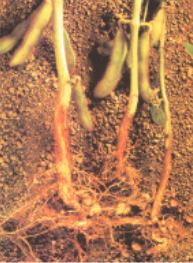
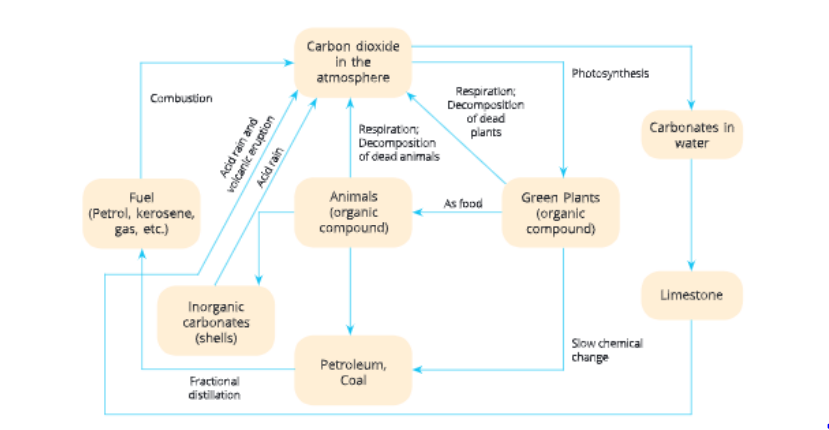

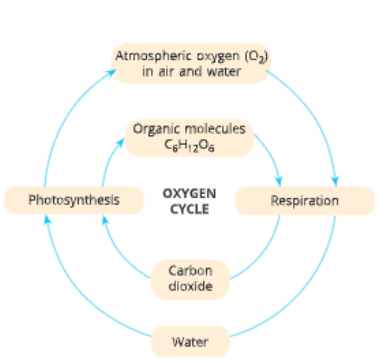

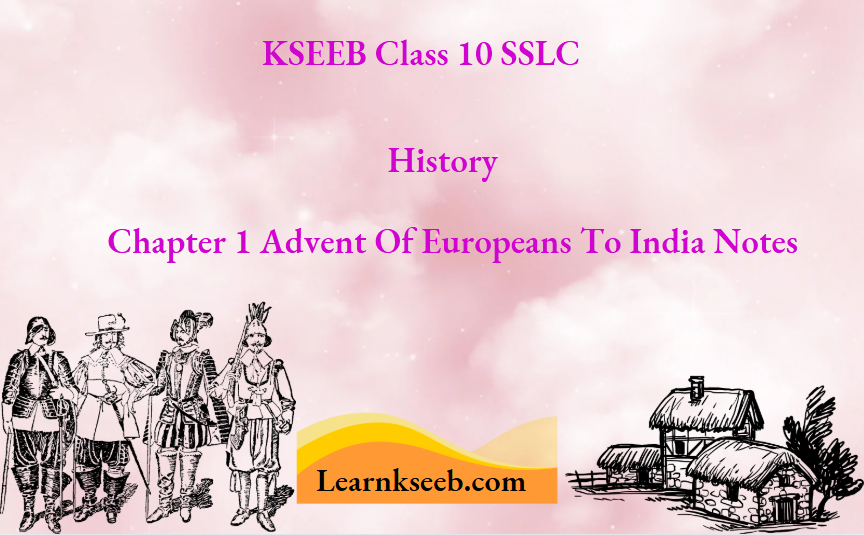















 This Planaria worm somehow gets cut into three pieces. After a certain time, each cut piece of the body of Planaria worm grows into a complete Planaria worm. In this way, three Planaria worms are produced from just one Planaria worm. Similarly, if the body of a Hydra gets cut into a number of pieces, then each body piece of Hydra can grow into a complete Hydra. Please note that regeneration is not exactly the same as reproduction because most simple animals would not depend on being cut into pieces to be able to reproduce.
This Planaria worm somehow gets cut into three pieces. After a certain time, each cut piece of the body of Planaria worm grows into a complete Planaria worm. In this way, three Planaria worms are produced from just one Planaria worm. Similarly, if the body of a Hydra gets cut into a number of pieces, then each body piece of Hydra can grow into a complete Hydra. Please note that regeneration is not exactly the same as reproduction because most simple animals would not depend on being cut into pieces to be able to reproduce.



































 Family planning enables a couple to decide on the number of children it wants to have and when to have them. If a couple has less number of children, it can provide good food, good clothes, and good education to each child. This will make the parents as well as the children happy.
Family planning enables a couple to decide on the number of children it wants to have and when to have them. If a couple has less number of children, it can provide good food, good clothes, and good education to each child. This will make the parents as well as the children happy.

 This is Human Immunodeficiency Virus (HIV). The white bood cells (WBCs) of a person destroy disease-causing bacteria and protect the health of a person.
This is Human Immunodeficiency Virus (HIV). The white bood cells (WBCs) of a person destroy disease-causing bacteria and protect the health of a person.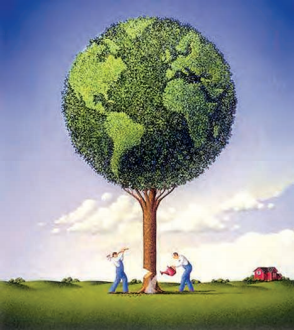
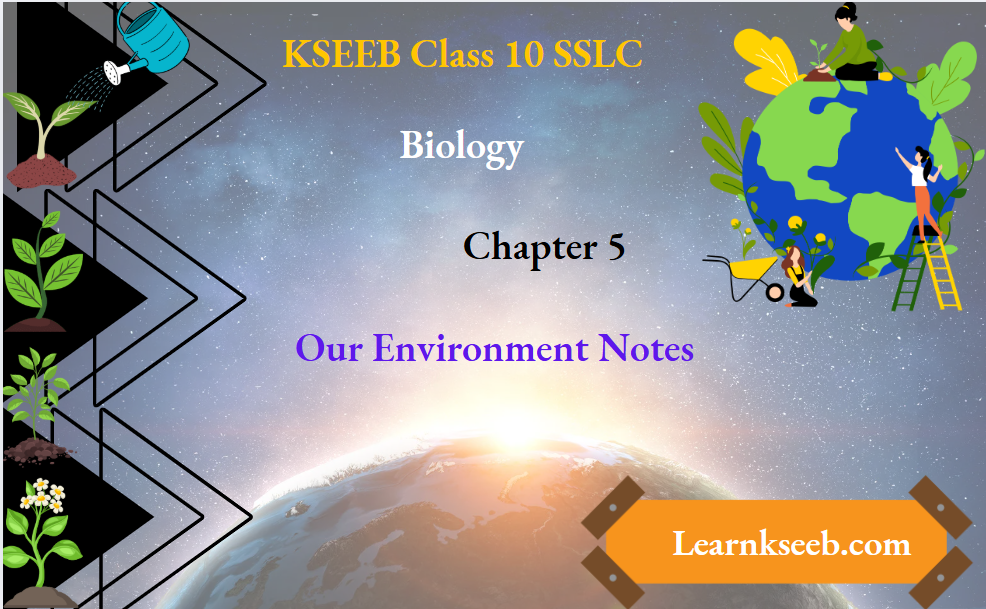


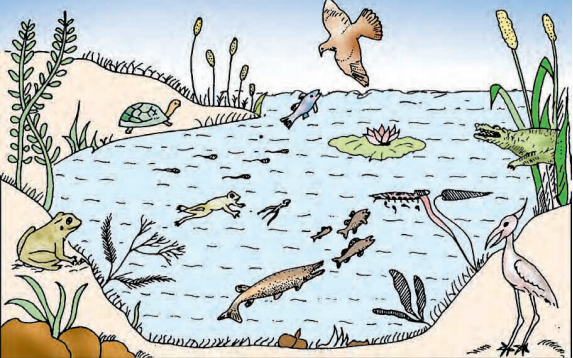
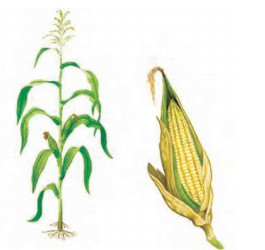
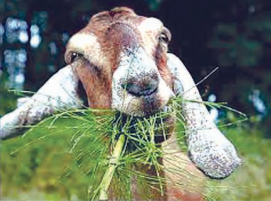
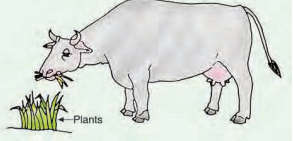
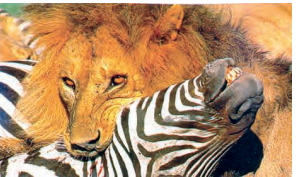
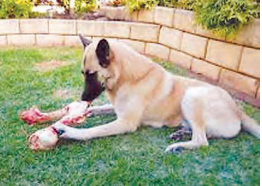


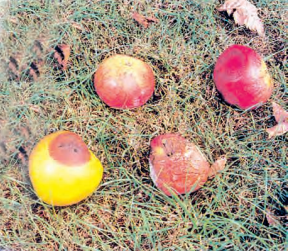



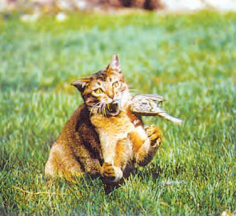
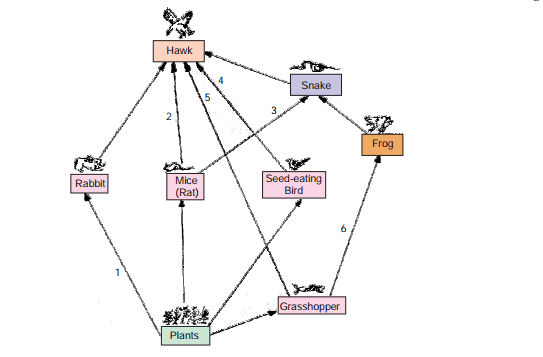 This food web starts from the plants which is a producer and ends in top carnivore hawk (baaz). There are as many as six food chains operating in the food web shown above which have been marked 1, 2, 3, 4, 5 and 6.
This food web starts from the plants which is a producer and ends in top carnivore hawk (baaz). There are as many as six food chains operating in the food web shown above which have been marked 1, 2, 3, 4, 5 and 6.
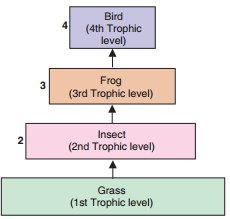

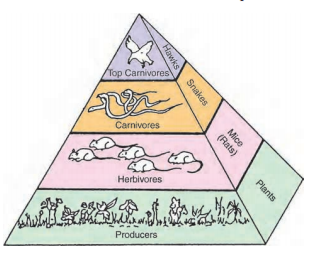
 When the Romans started capturing lions, the population of lions in the forest was reduced to a large extent Lion is a predator which kills the herbivorous animals like deer, sheep, goat, buffalo, etc. Now, since the population of predator lion decreased, there was no one to kill the herbivorous animals. Due to this the population of herbivorous animals increased rapidly.
When the Romans started capturing lions, the population of lions in the forest was reduced to a large extent Lion is a predator which kills the herbivorous animals like deer, sheep, goat, buffalo, etc. Now, since the population of predator lion decreased, there was no one to kill the herbivorous animals. Due to this the population of herbivorous animals increased rapidly.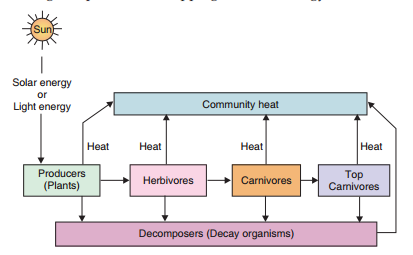
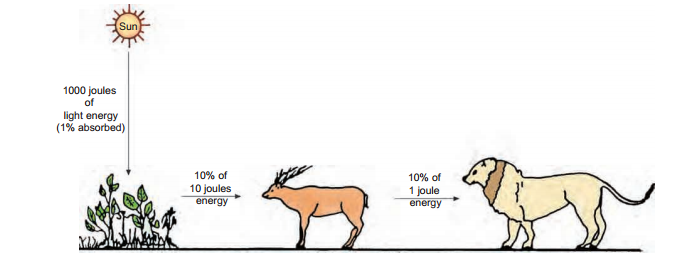 We will now apply the 10 per cent law to the food chain : Plants-Herbivores -Carnivores . The plants or first trophic level has 10 joules of energy in it. Now, according to ten per cent law, only 10% of 10 joules of energy (which is 1 joule) will be available for transfer at the next trophic level, so that the herbivore (deer) will have only 1 joule of energy stored as food at the second trophic level . Applying the ten per cent law again we find that 10% of the remaining 1 joule (which is 0.1 joule) will be transferred to third trophic level of carnivore (lion). So, the energy available in the lion as food will be only 0.1 joule. We will now solve some problems based on ten per cent law.
We will now apply the 10 per cent law to the food chain : Plants-Herbivores -Carnivores . The plants or first trophic level has 10 joules of energy in it. Now, according to ten per cent law, only 10% of 10 joules of energy (which is 1 joule) will be available for transfer at the next trophic level, so that the herbivore (deer) will have only 1 joule of energy stored as food at the second trophic level . Applying the ten per cent law again we find that 10% of the remaining 1 joule (which is 0.1 joule) will be transferred to third trophic level of carnivore (lion). So, the energy available in the lion as food will be only 0.1 joule. We will now solve some problems based on ten per cent law.
 From soil and water, these pesticides are absorbed by the growing plants alongwith water and other minerals When herbivorous animals eat plant food, then these poisonous chemical pesticides go into their bodies hrough the food chain. And when the carnivorous animals eat herbivores, then the pesticides get transferred to their bodies. Man being an omnivore, eats plant food as well as herbivores.
From soil and water, these pesticides are absorbed by the growing plants alongwith water and other minerals When herbivorous animals eat plant food, then these poisonous chemical pesticides go into their bodies hrough the food chain. And when the carnivorous animals eat herbivores, then the pesticides get transferred to their bodies. Man being an omnivore, eats plant food as well as herbivores. Thus, it is the ozone layer in the upper atmosphere which protects us from these diseases by absorbing ultraviolet rays coming from the sun.
Thus, it is the ozone layer in the upper atmosphere which protects us from these diseases by absorbing ultraviolet rays coming from the sun. This happens as follows : Chlorofluorocarbons (CFC) are the chemicals which are widely used in refrigeration (refrigerators and air conditioners) as a coolant; in fire extinguishers and in aerosol sprayers.
This happens as follows : Chlorofluorocarbons (CFC) are the chemicals which are widely used in refrigeration (refrigerators and air conditioners) as a coolant; in fire extinguishers and in aerosol sprayers.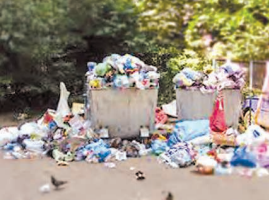



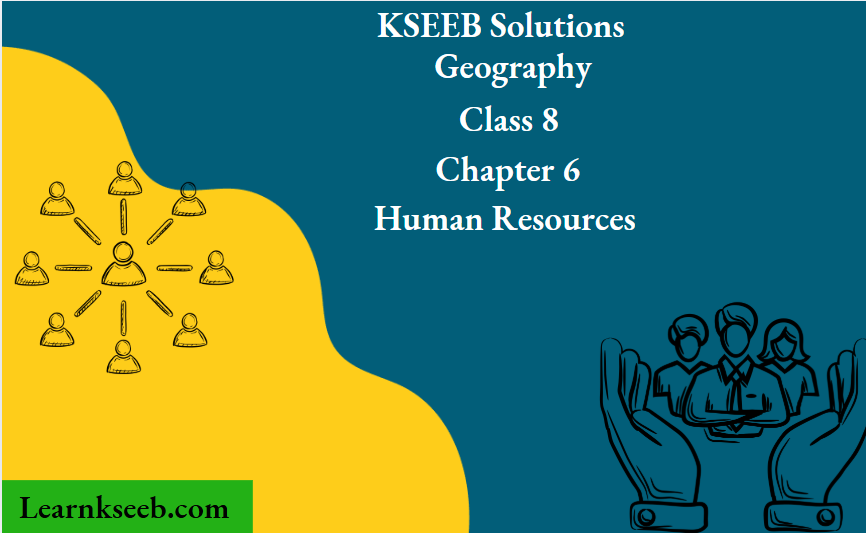

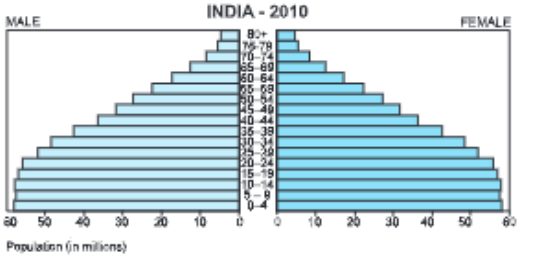
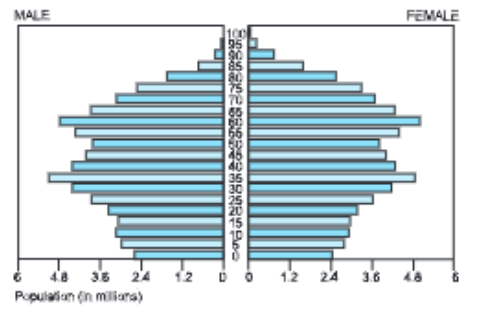
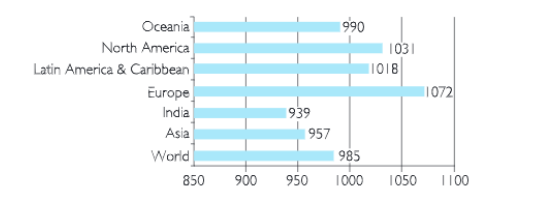

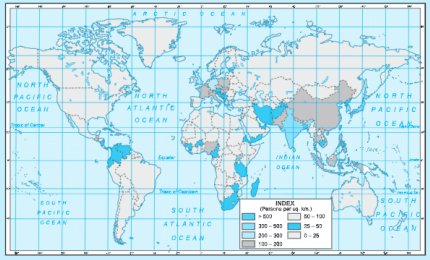
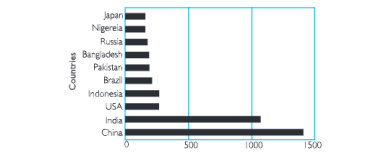
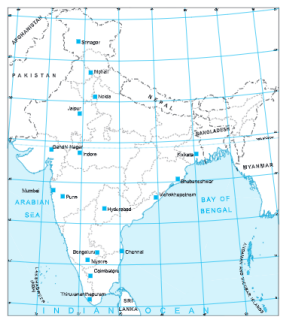
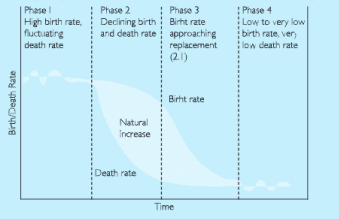


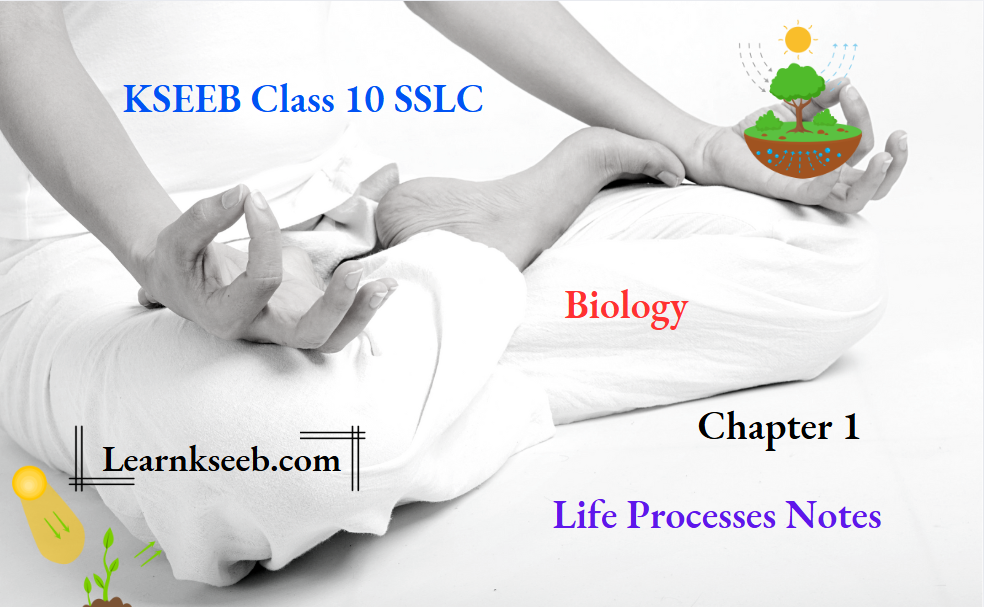
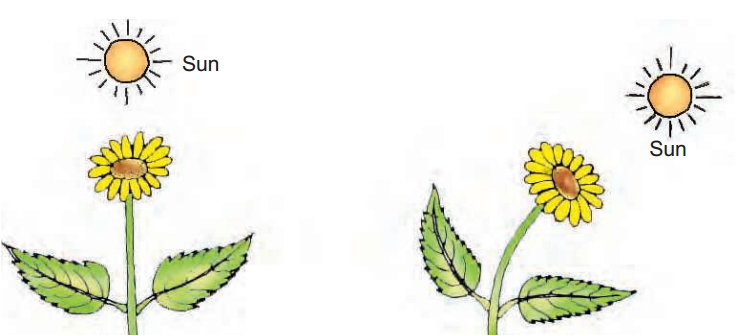

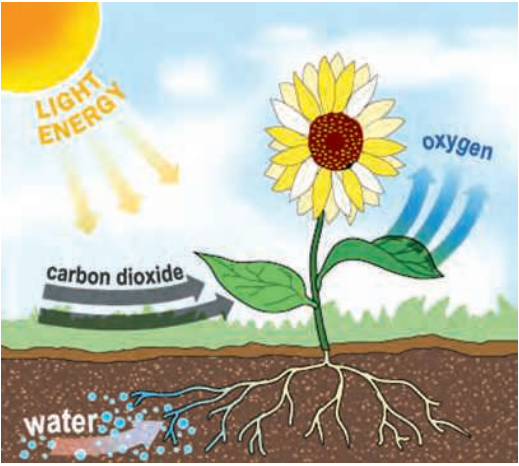
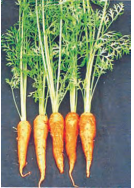 Those organisms which can make their own food from carbon dioxide and water are called autotrophs. Carbon dioxide and water are inorganic substances. So, we can also say that: Those organisms which can make their own food from the inorganic substances present in the environment, are called autotrophs.
Those organisms which can make their own food from carbon dioxide and water are called autotrophs. Carbon dioxide and water are inorganic substances. So, we can also say that: Those organisms which can make their own food from the inorganic substances present in the environment, are called autotrophs.